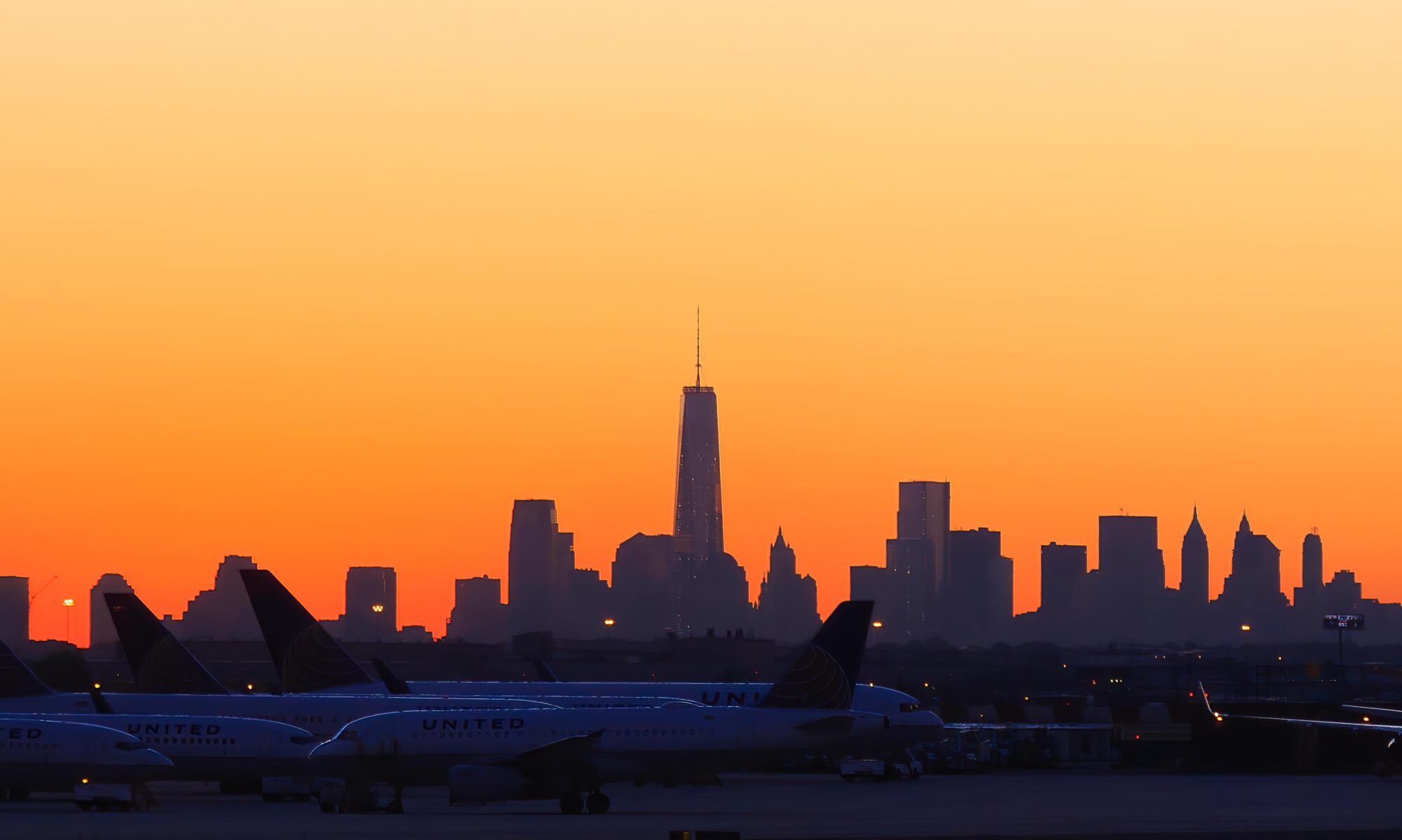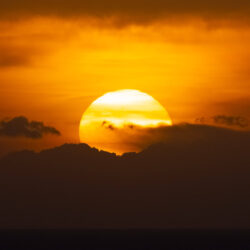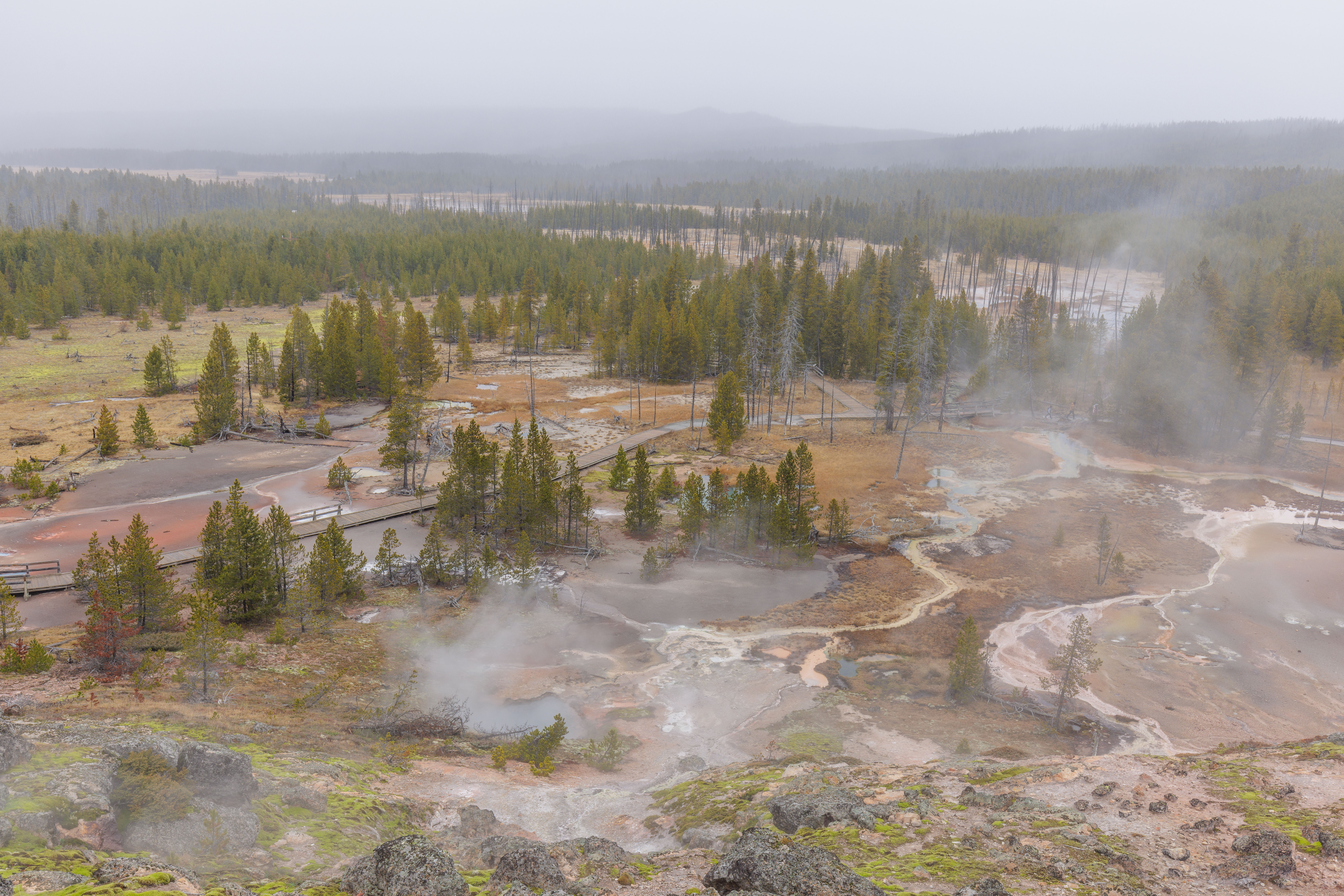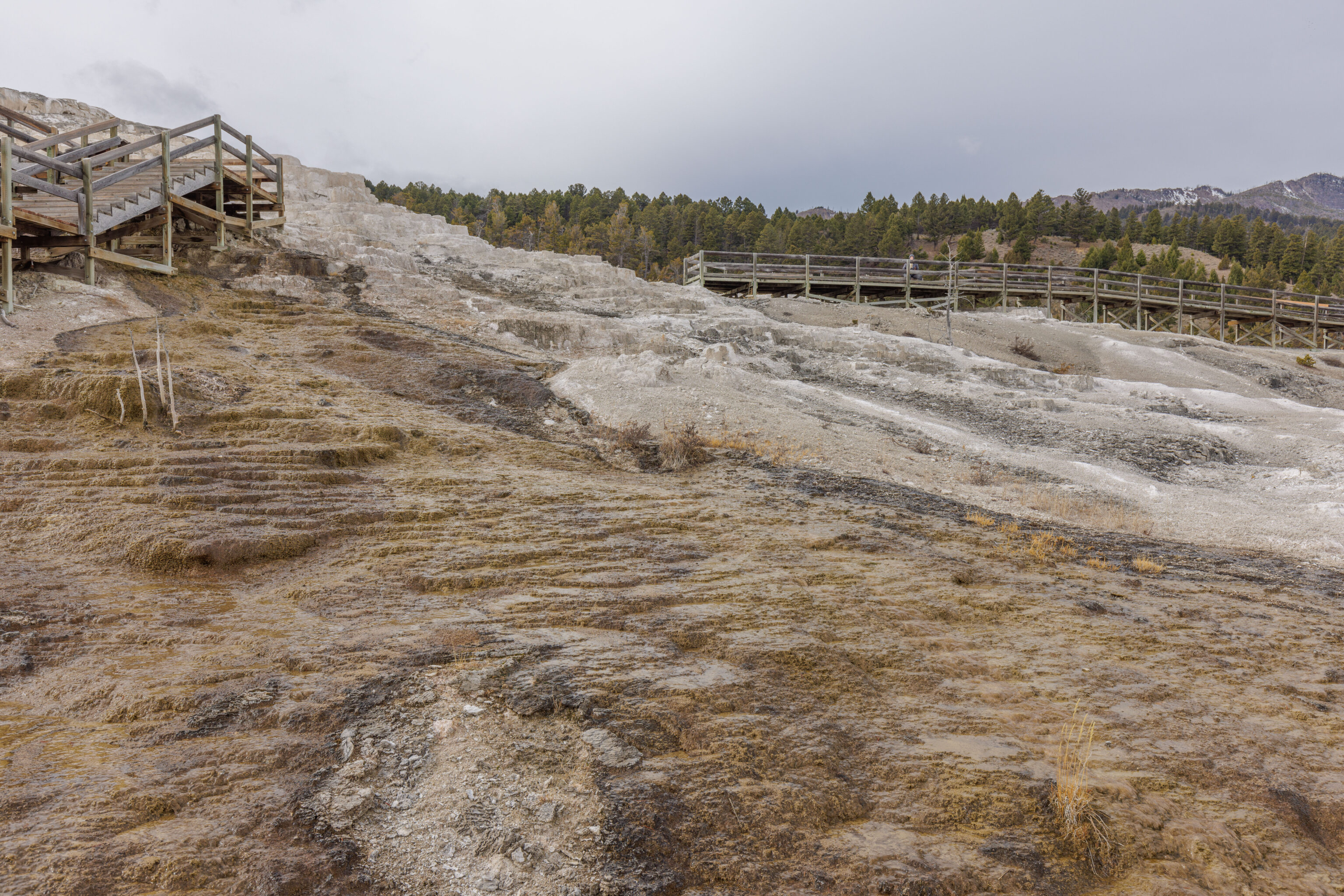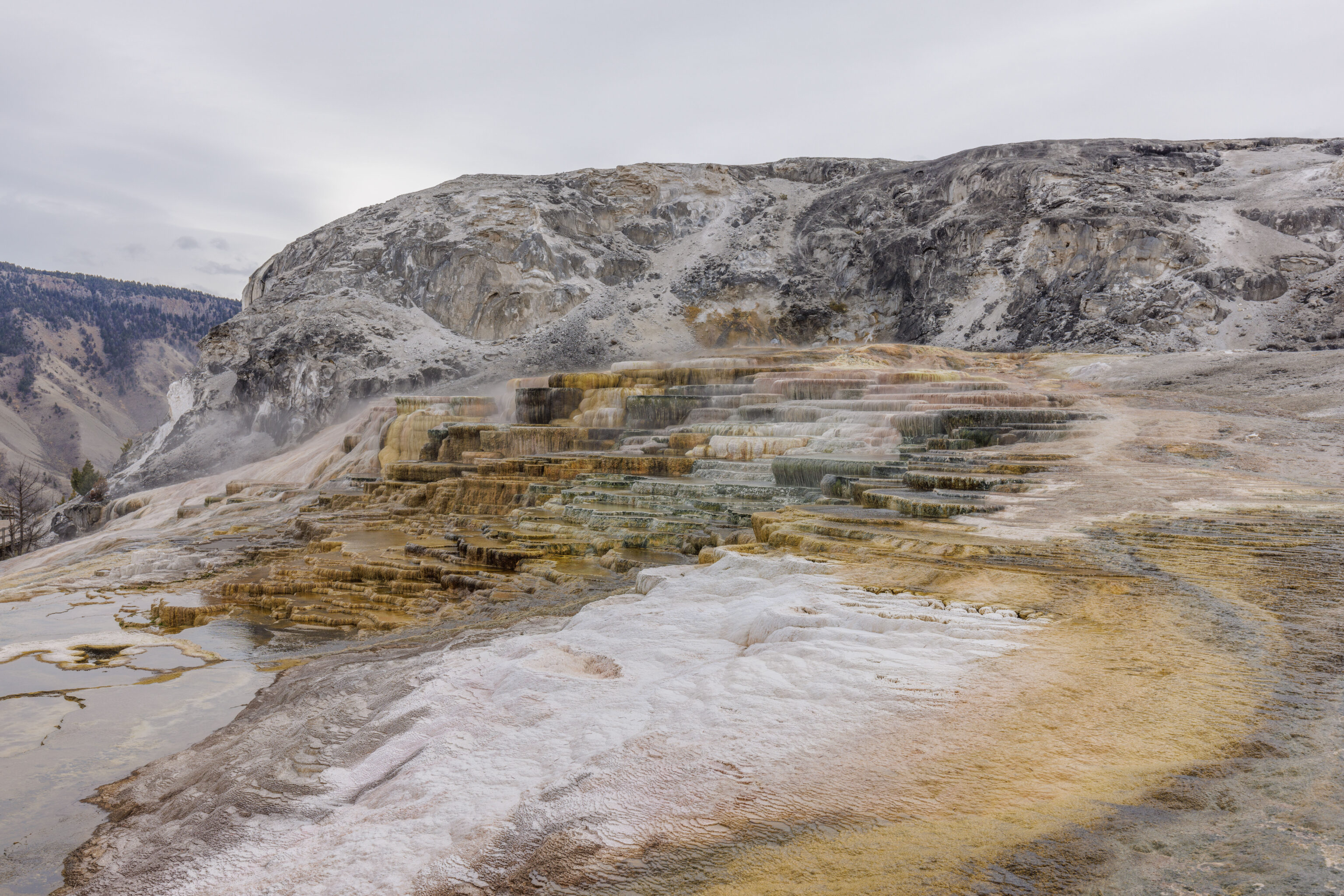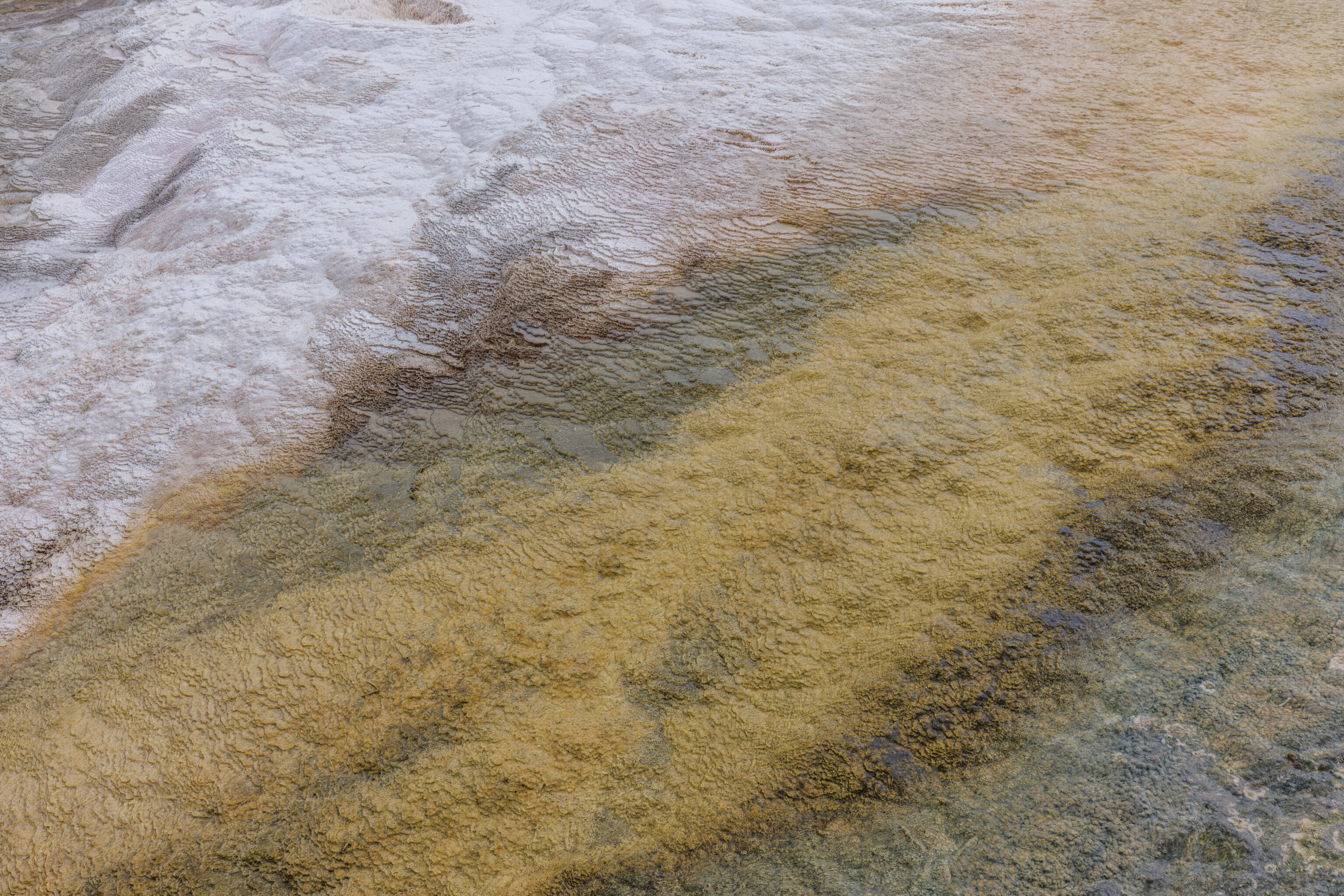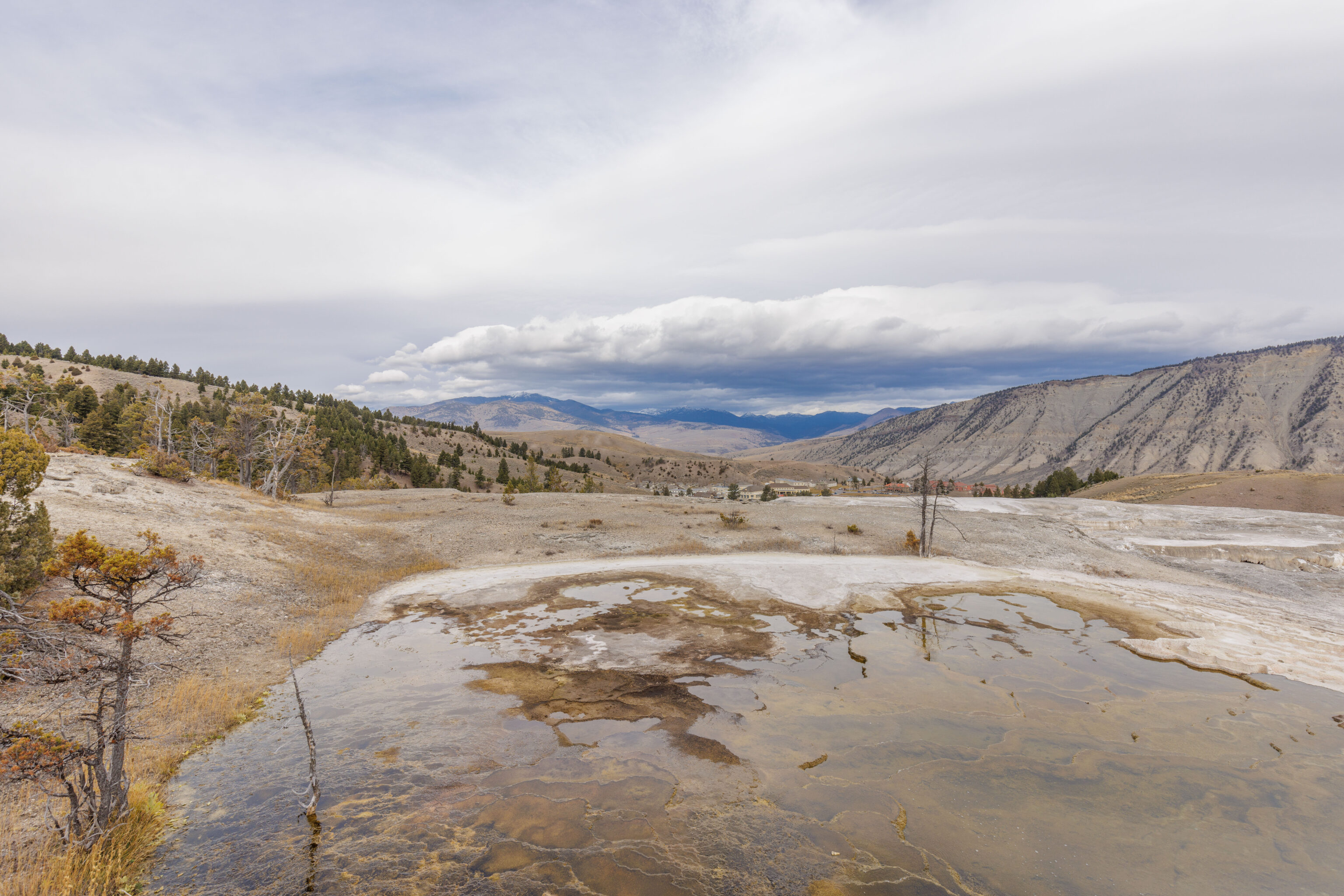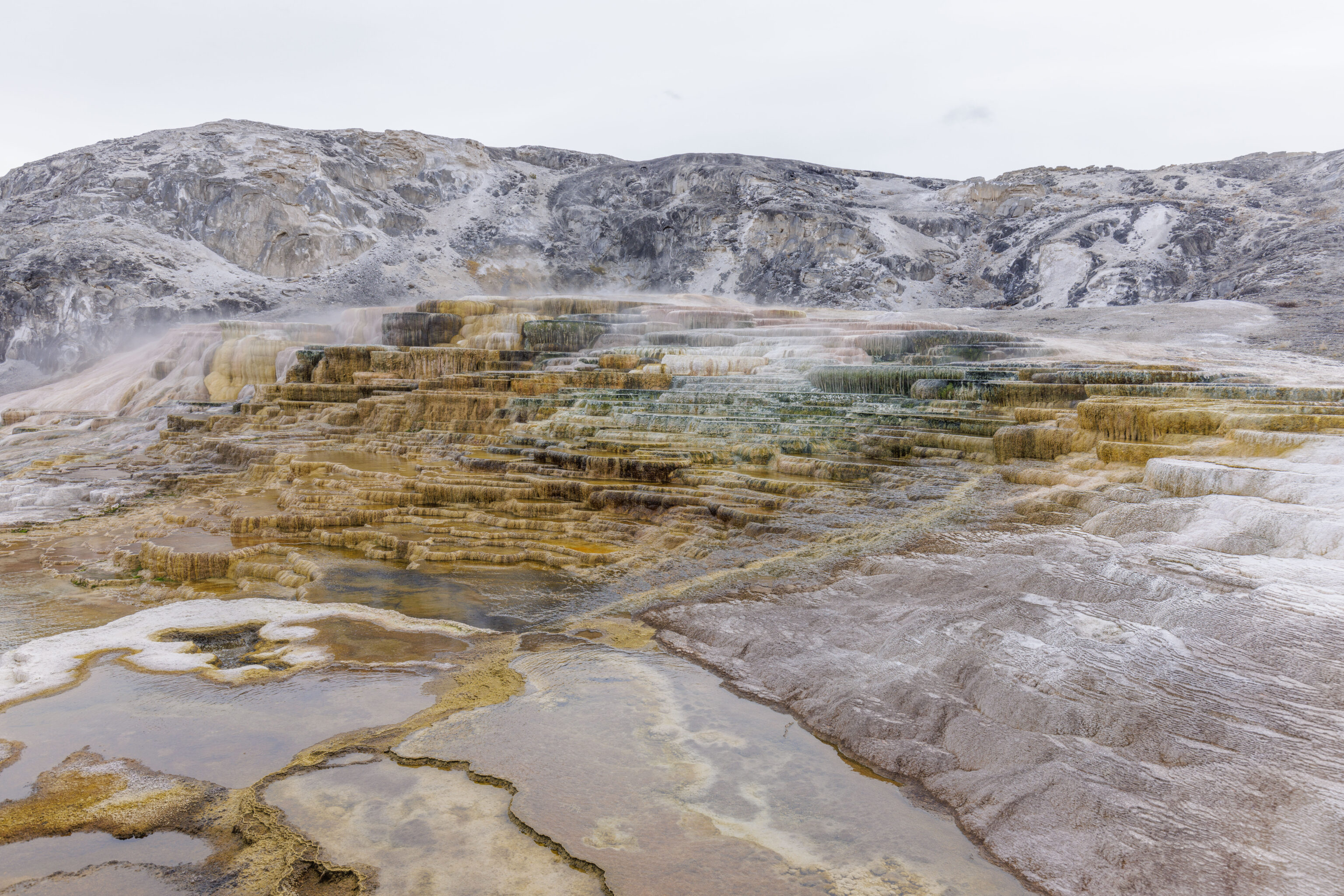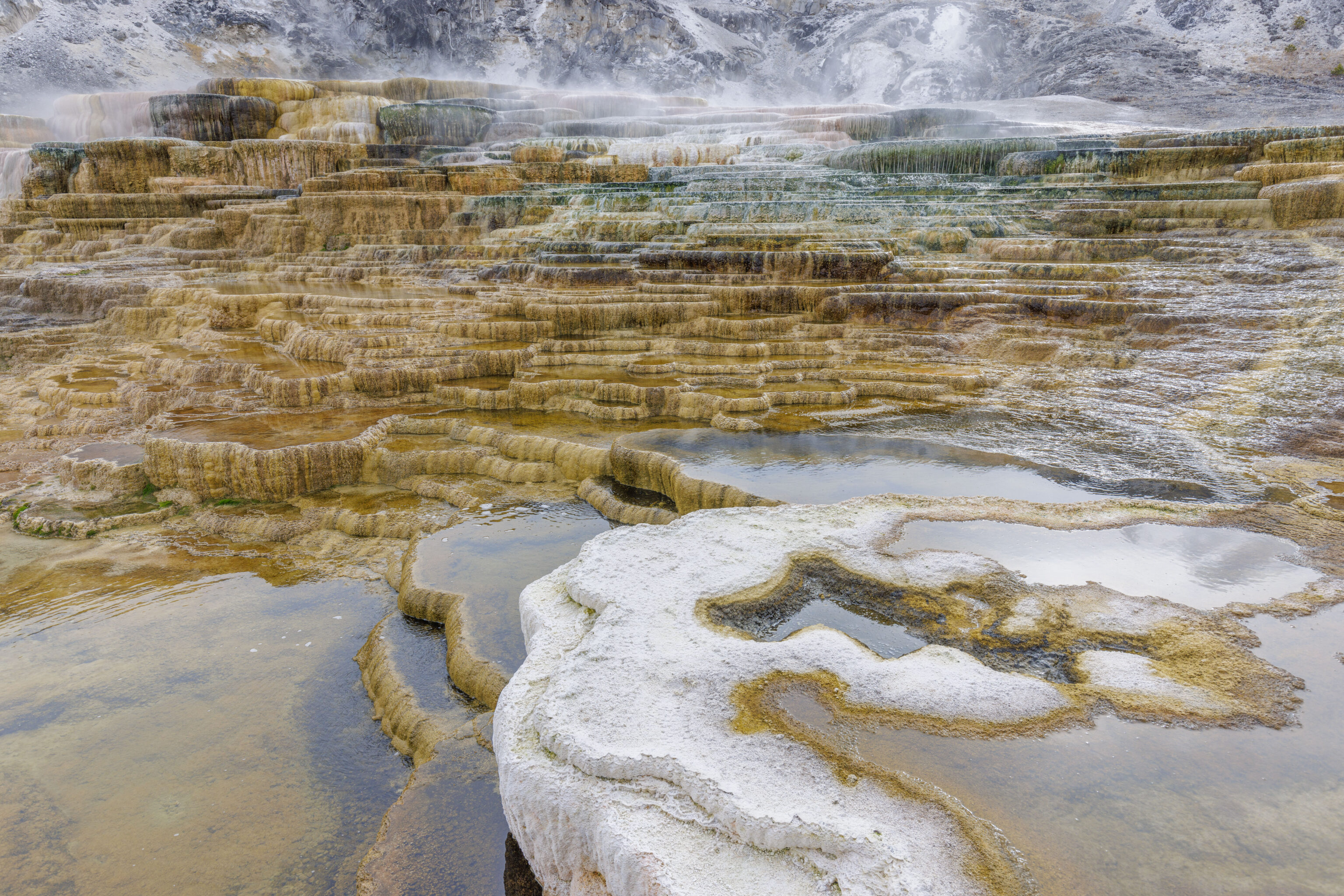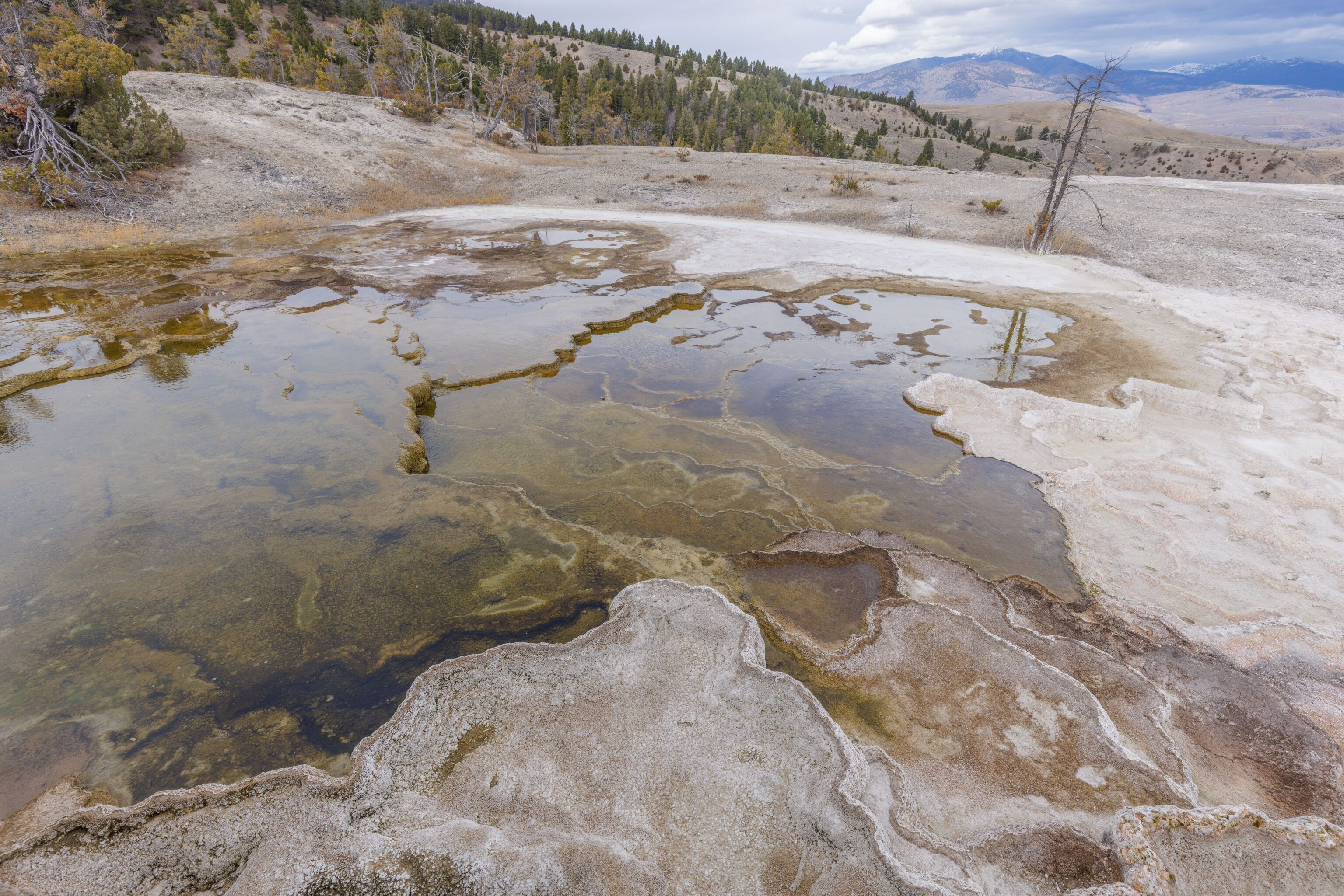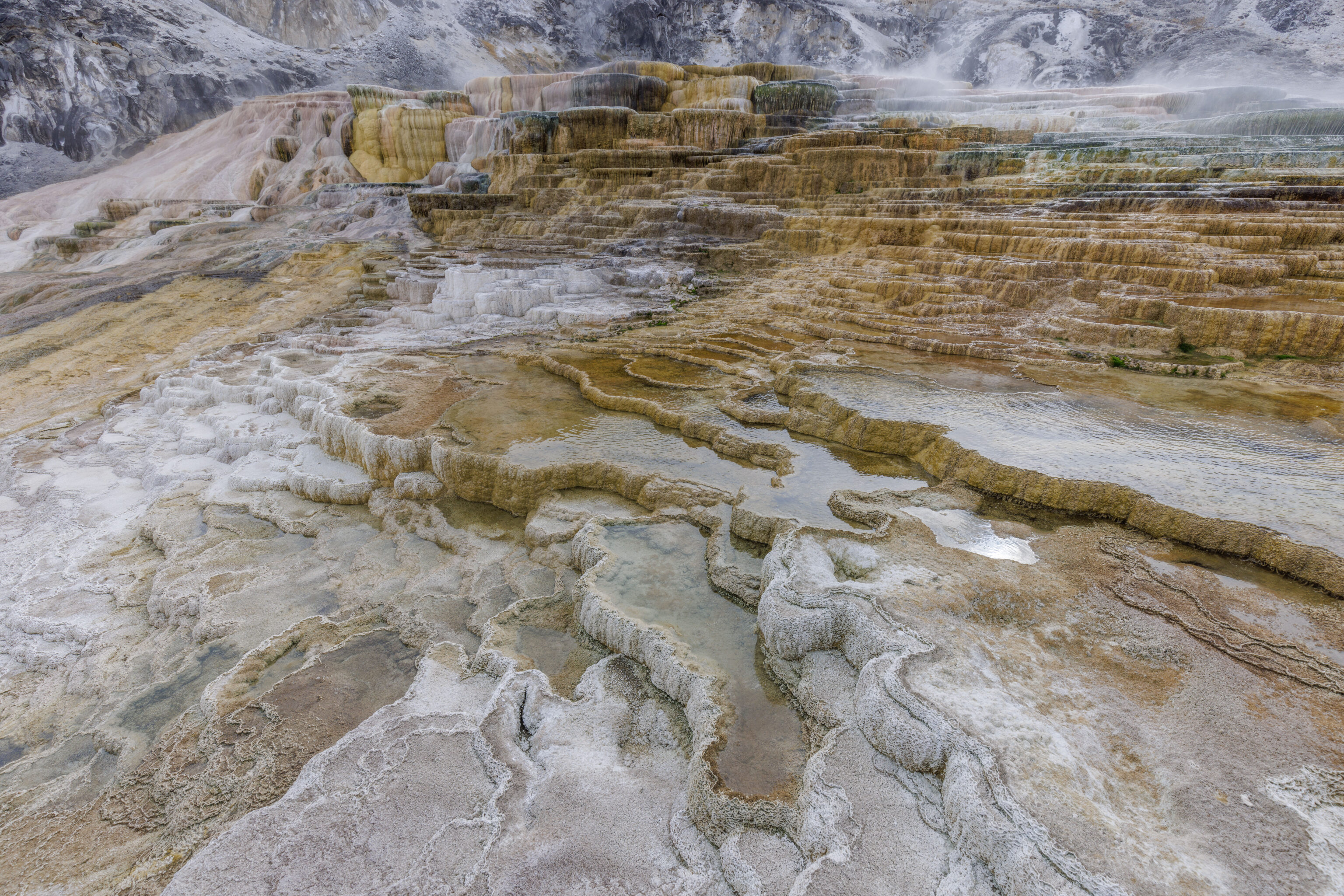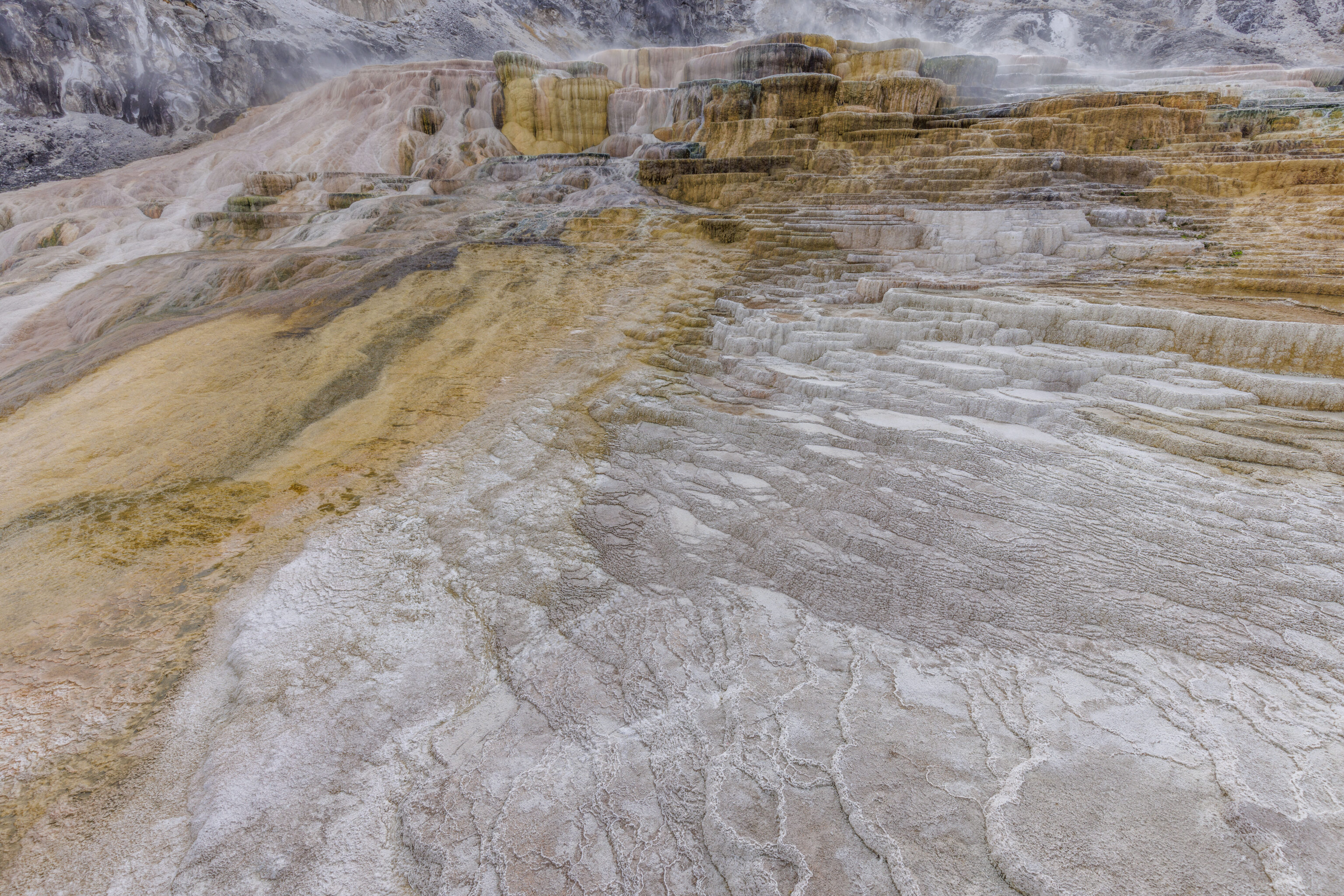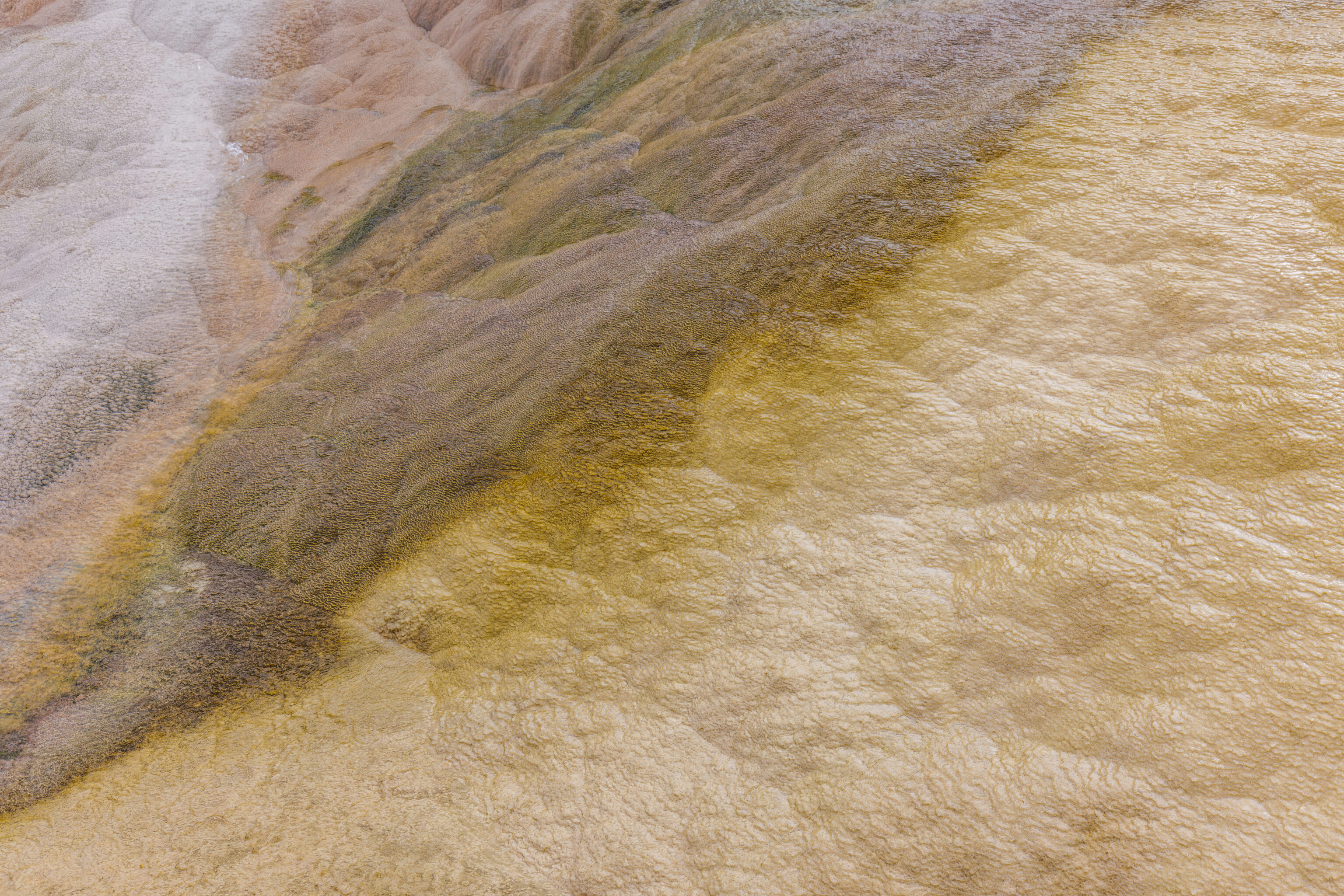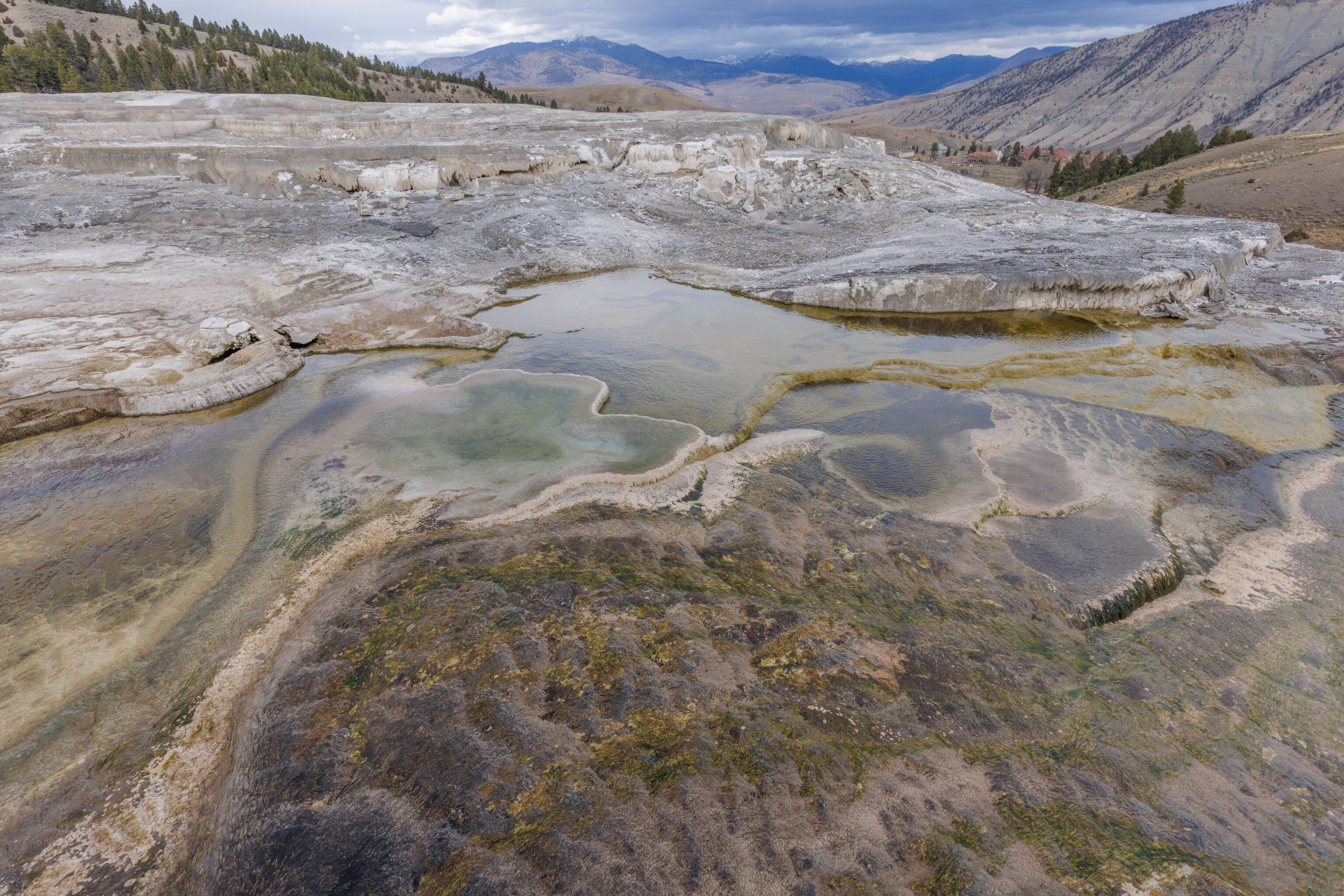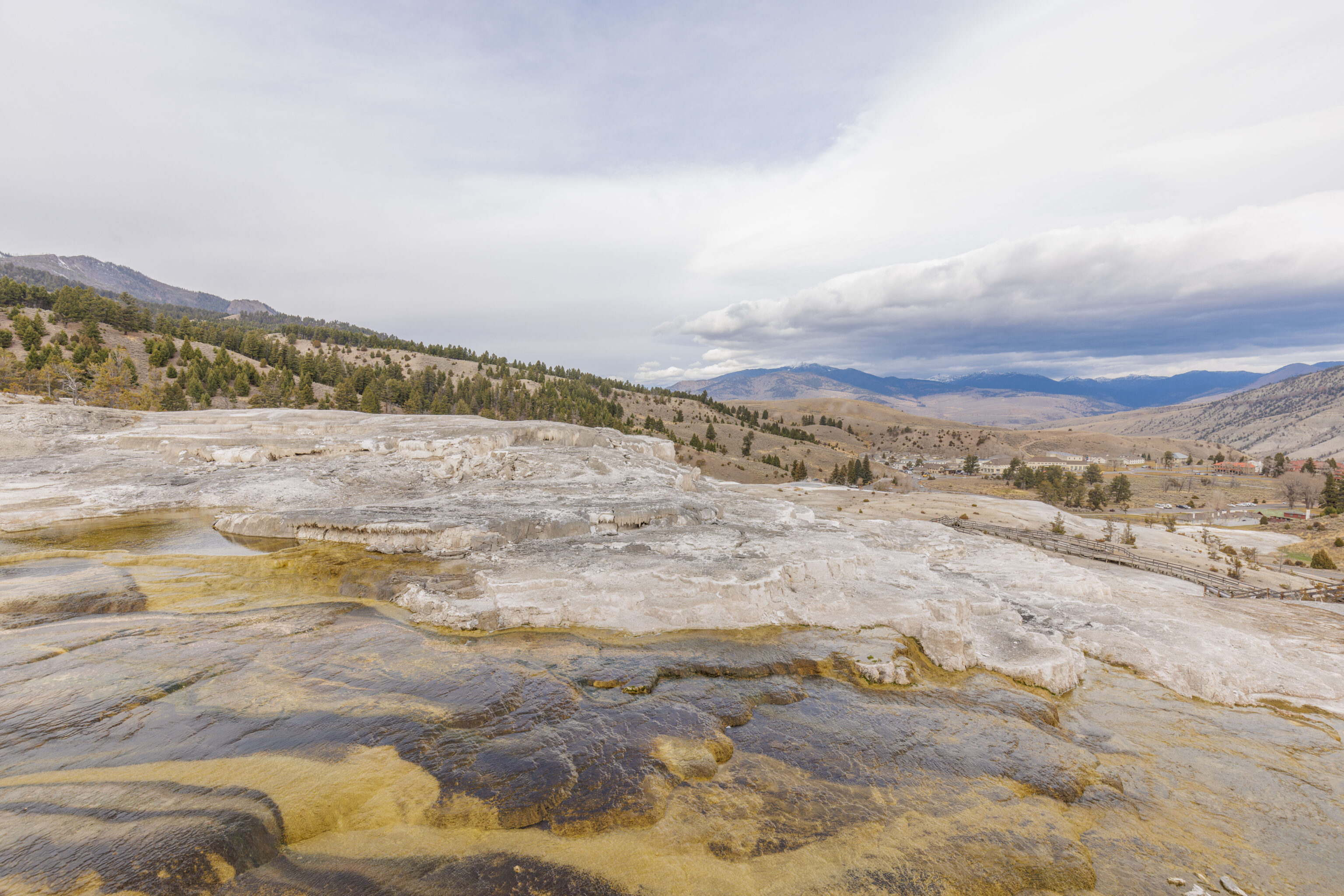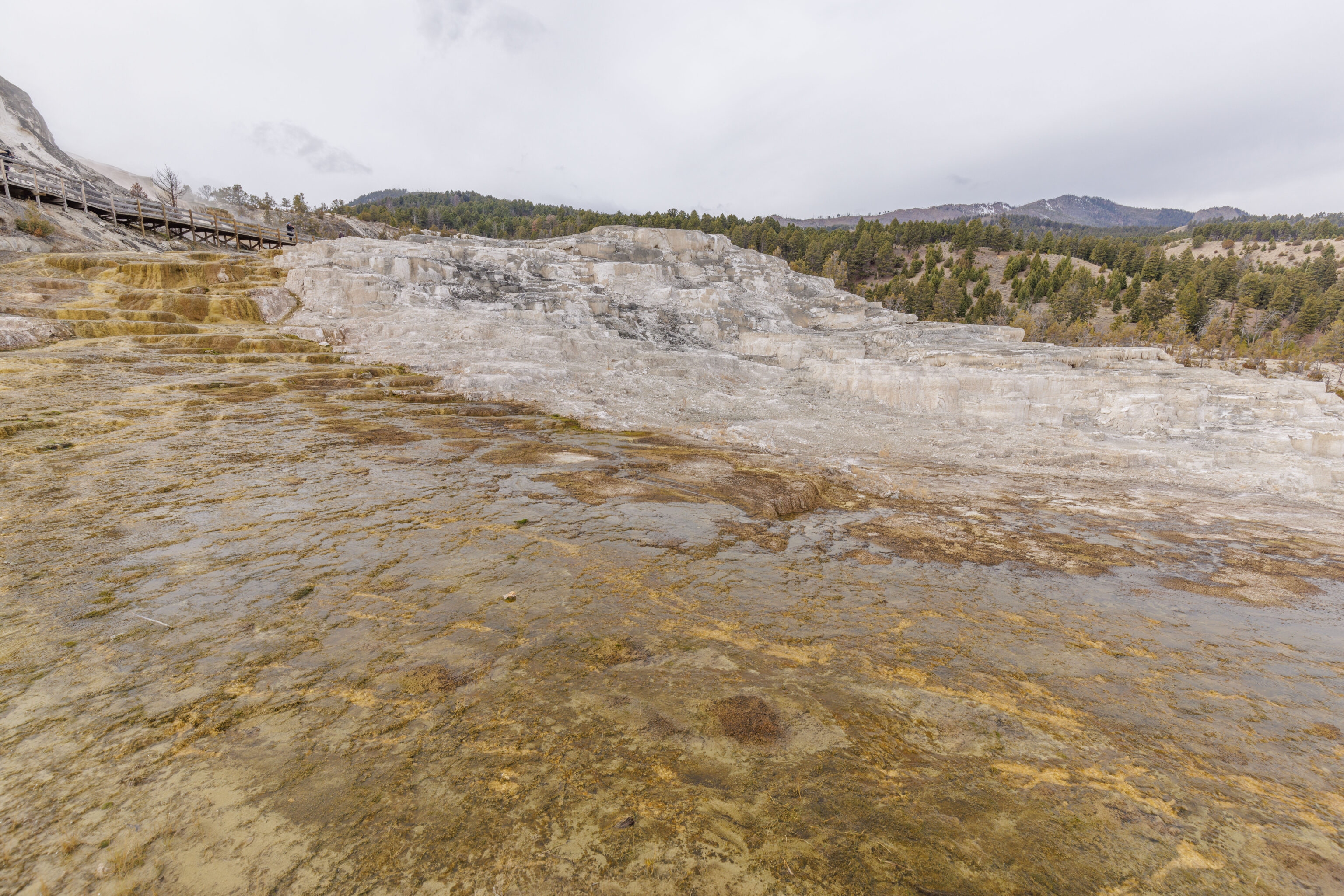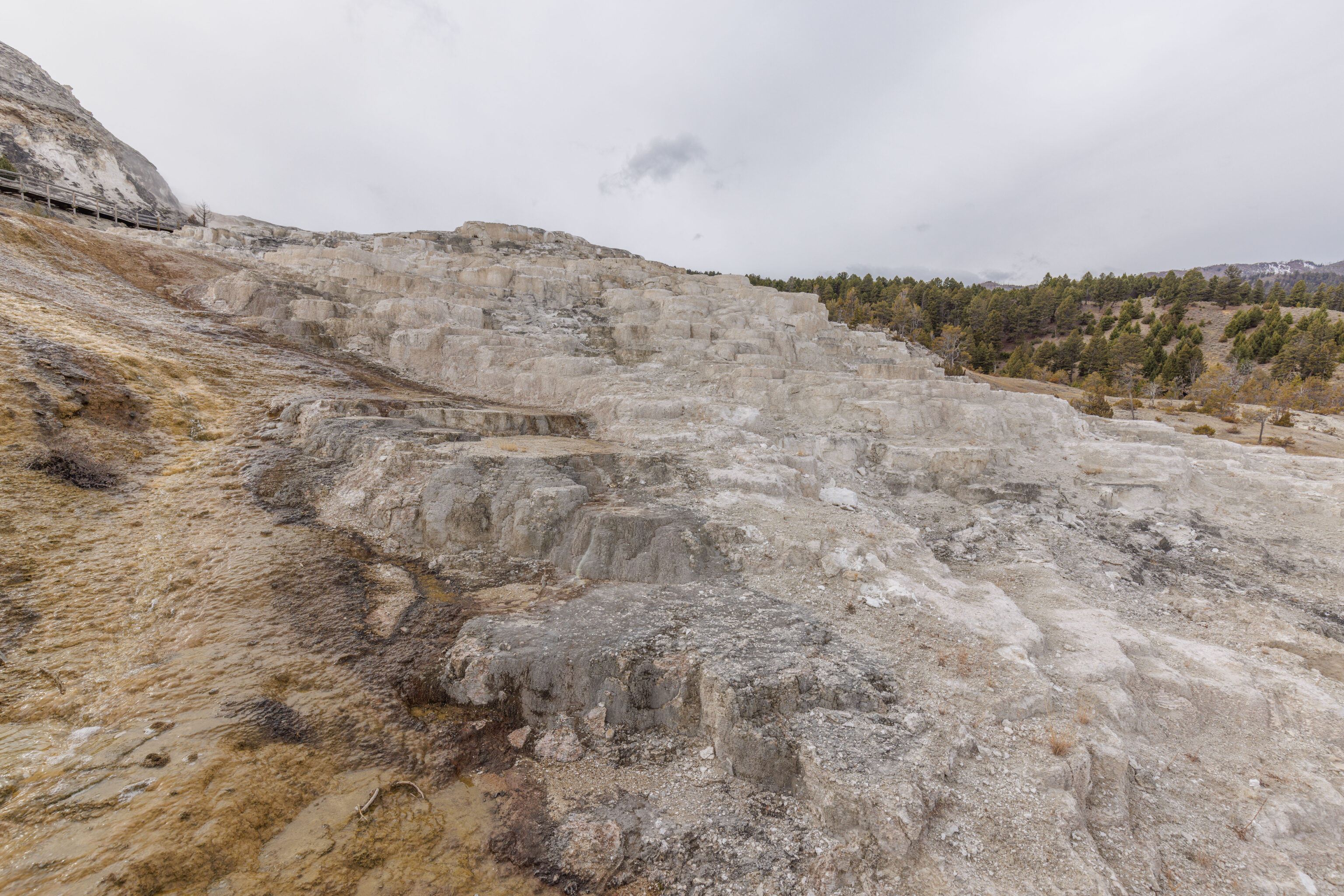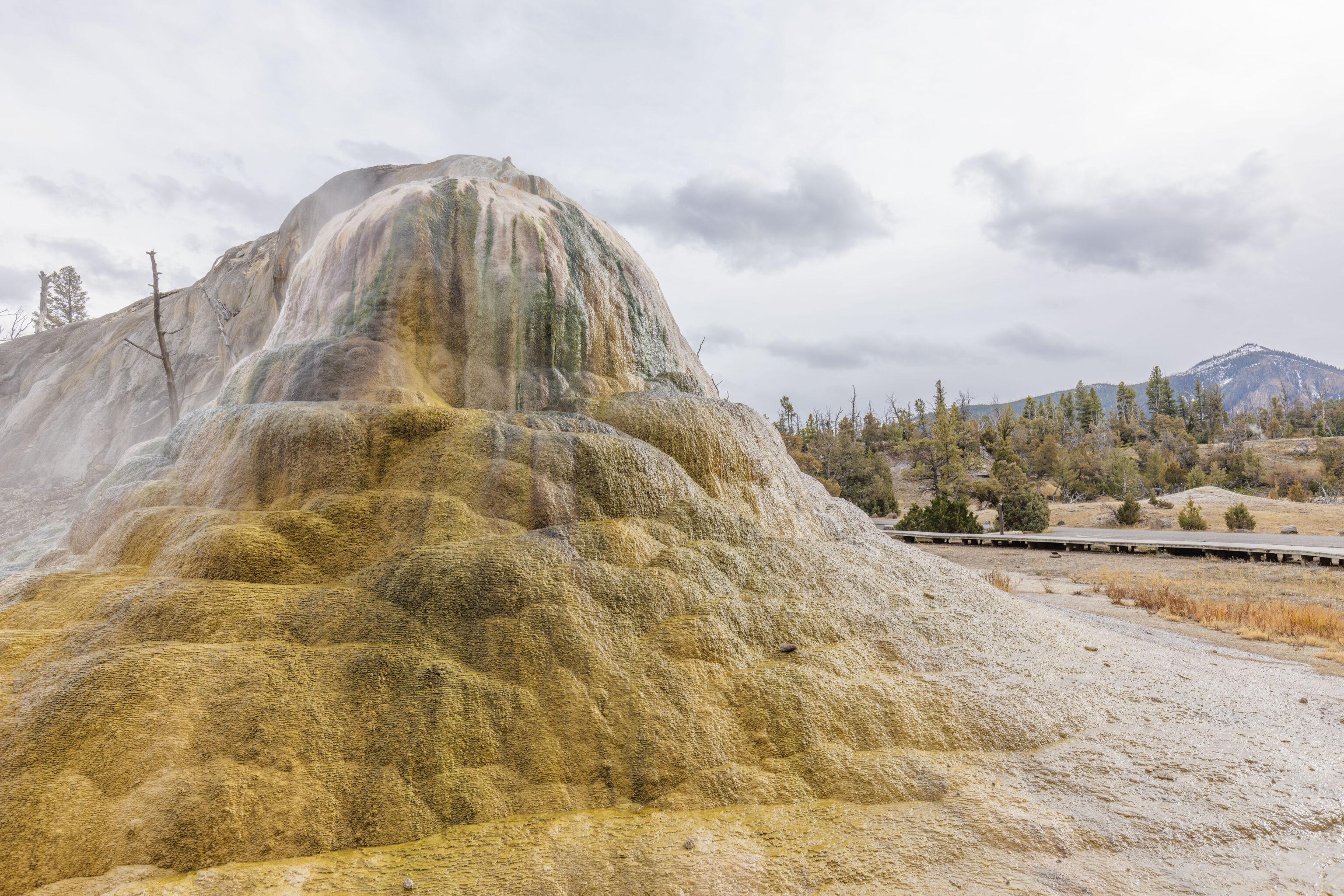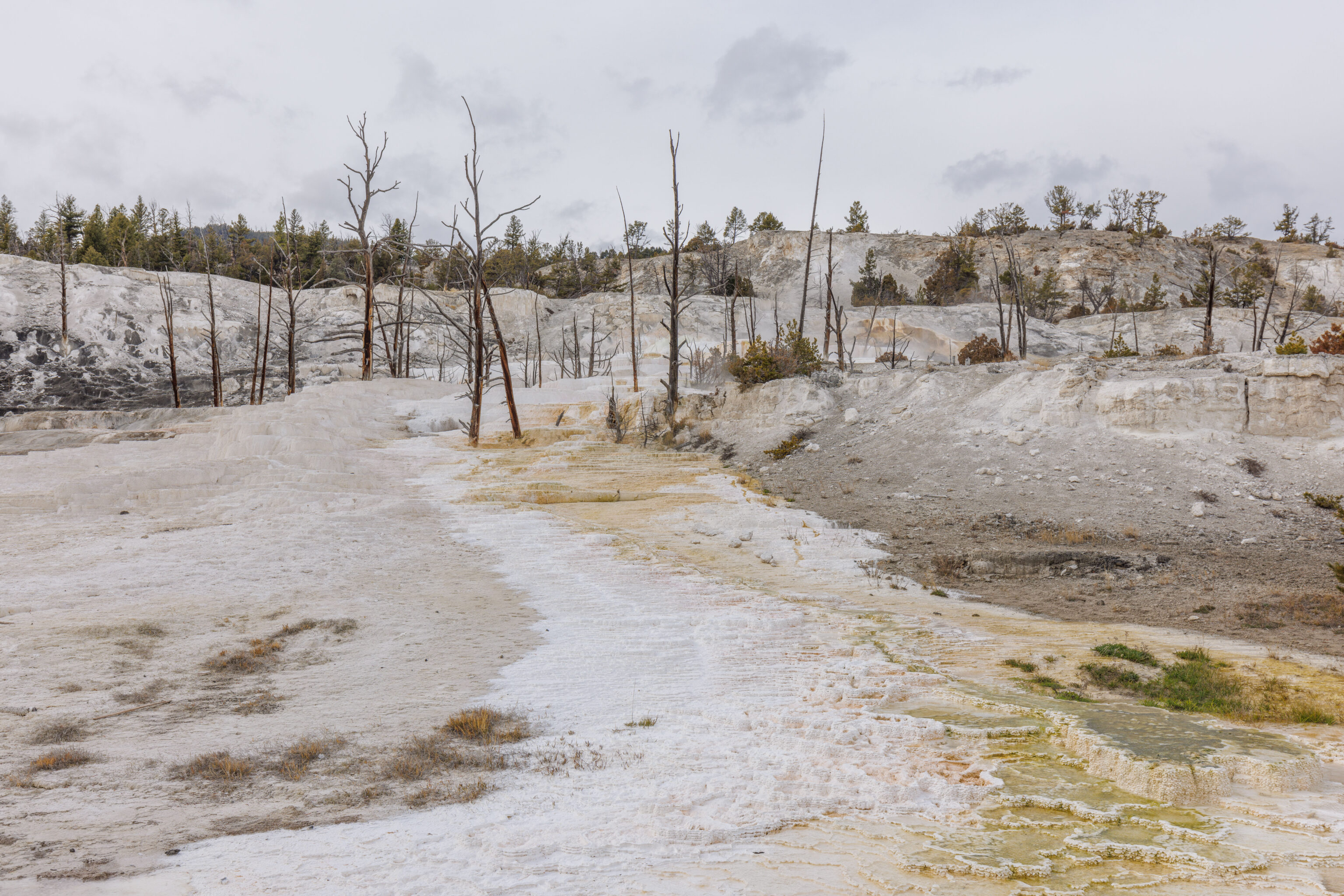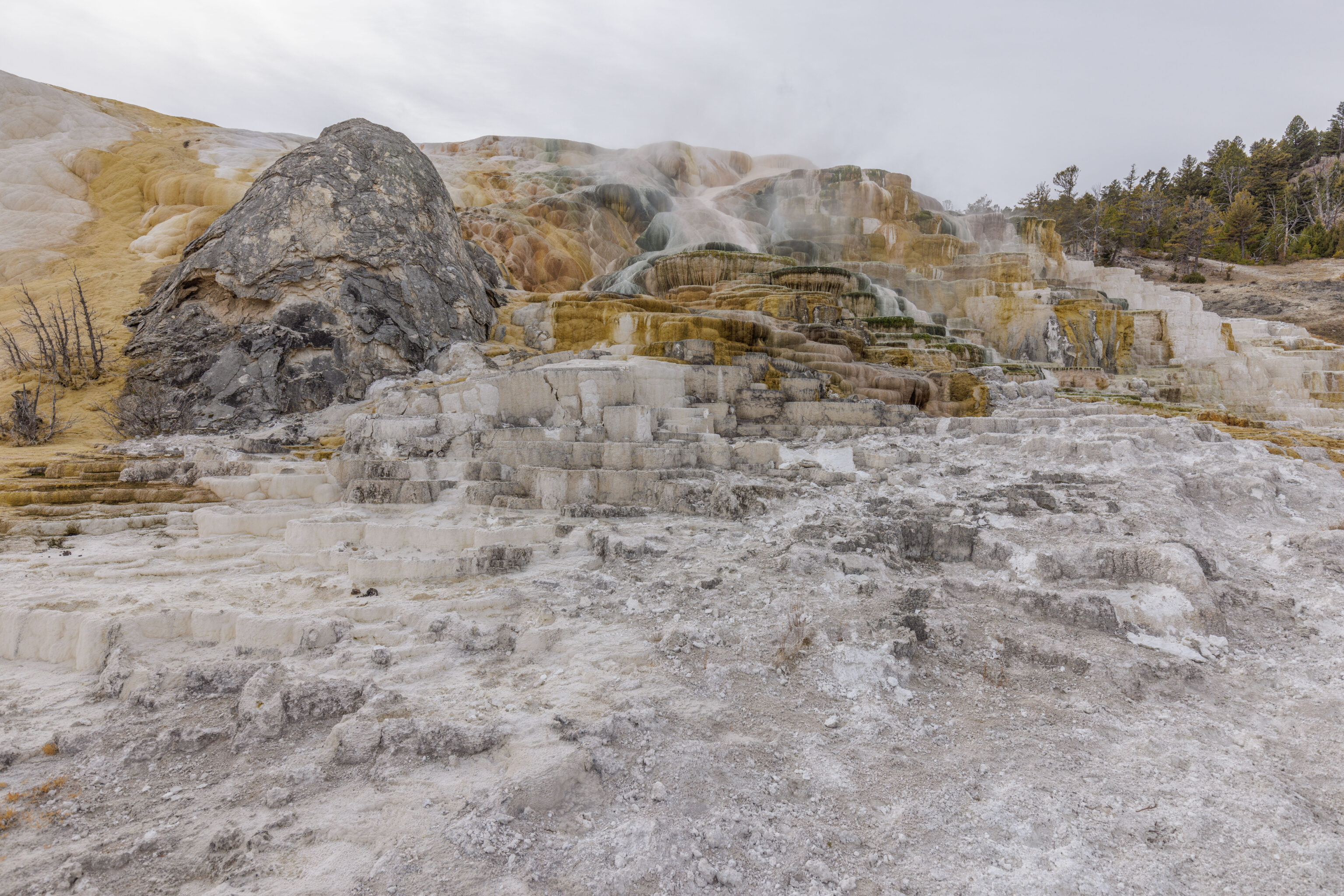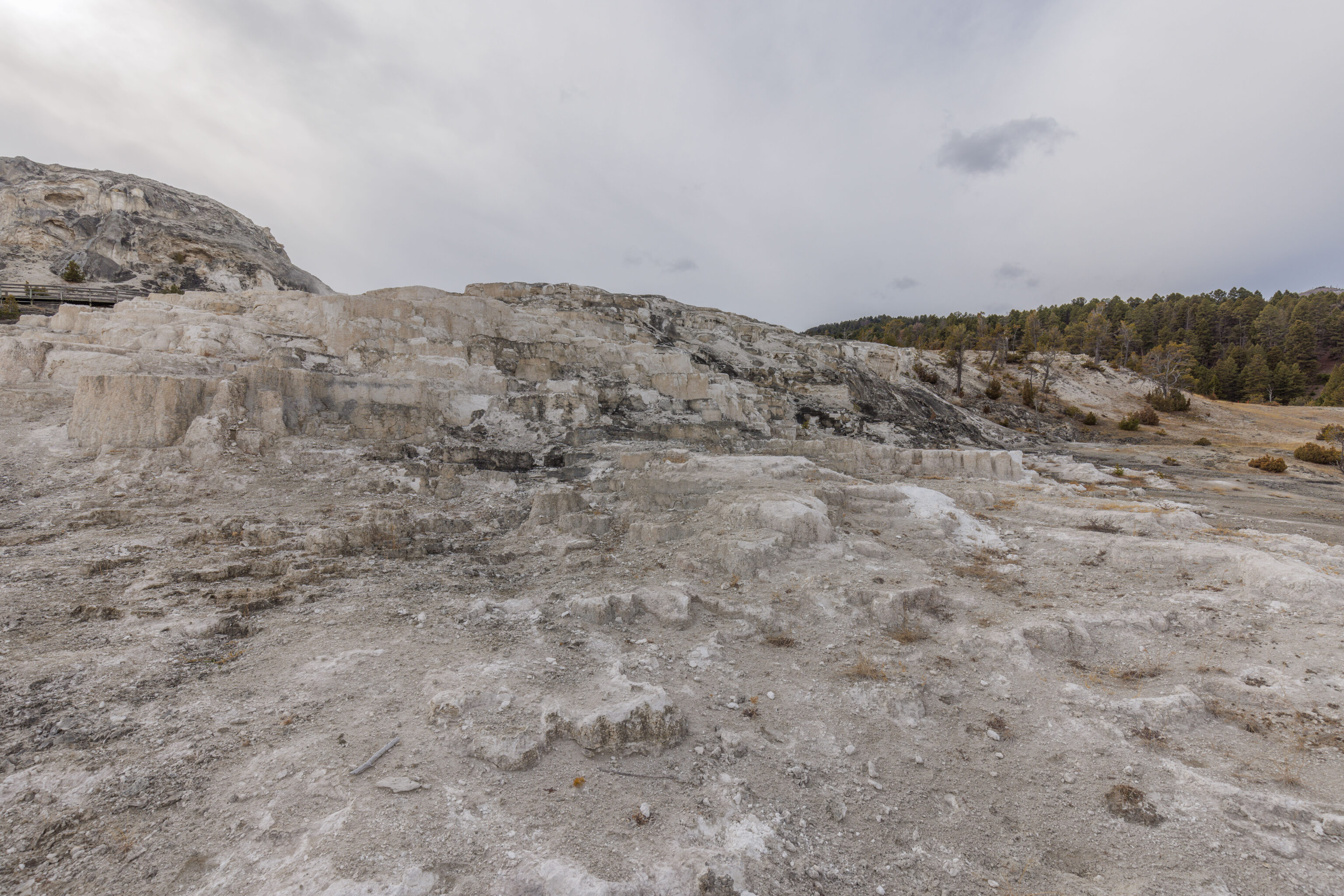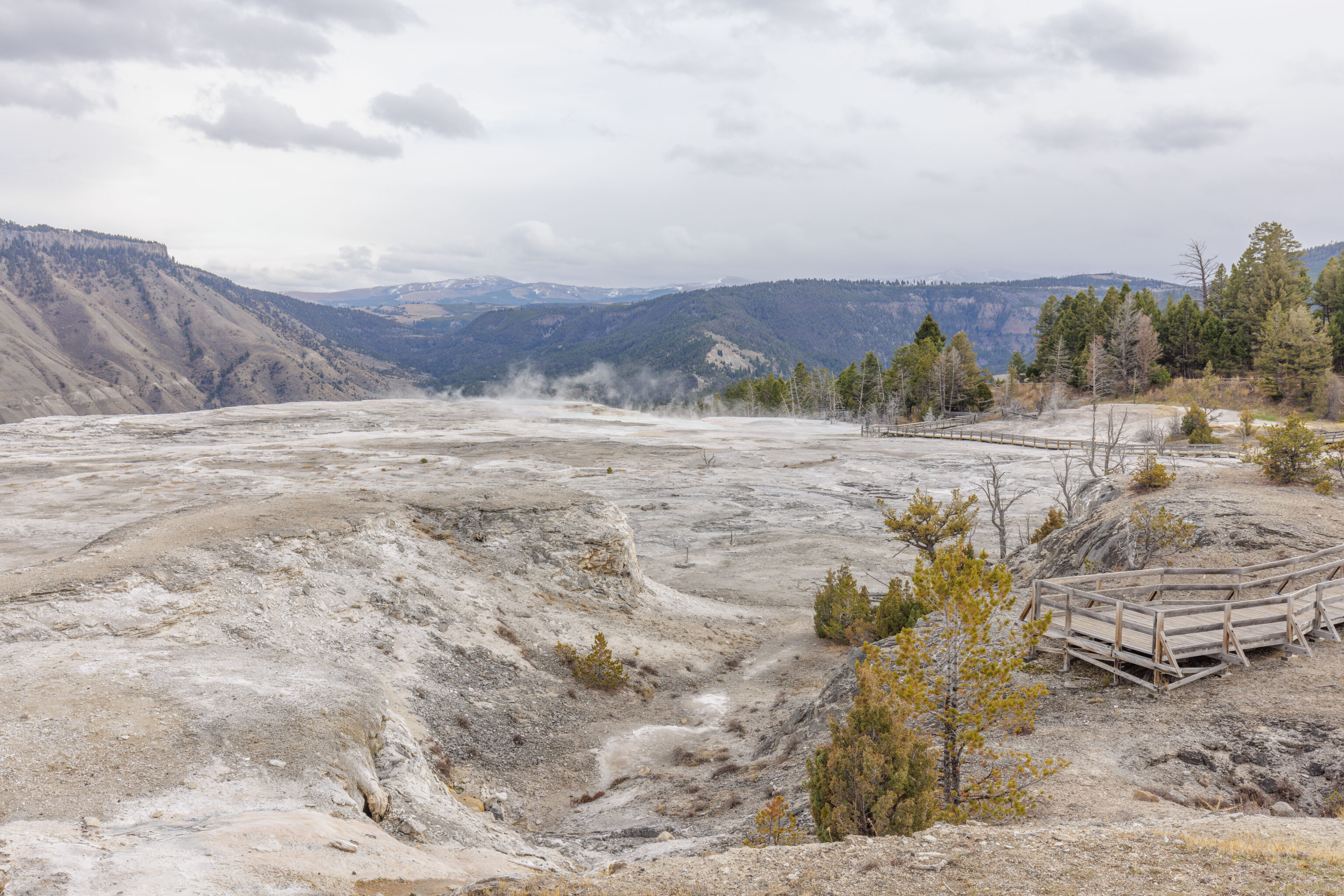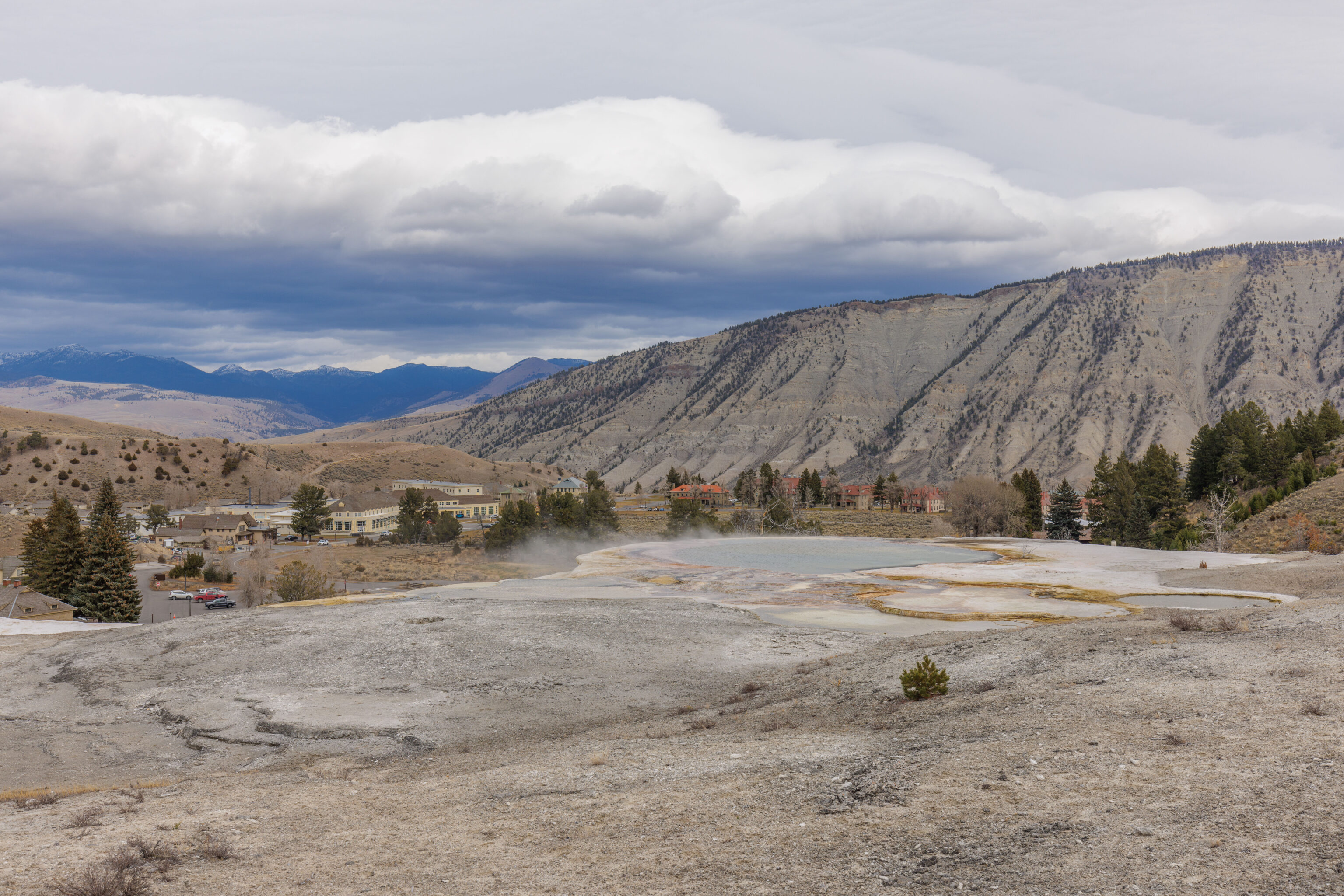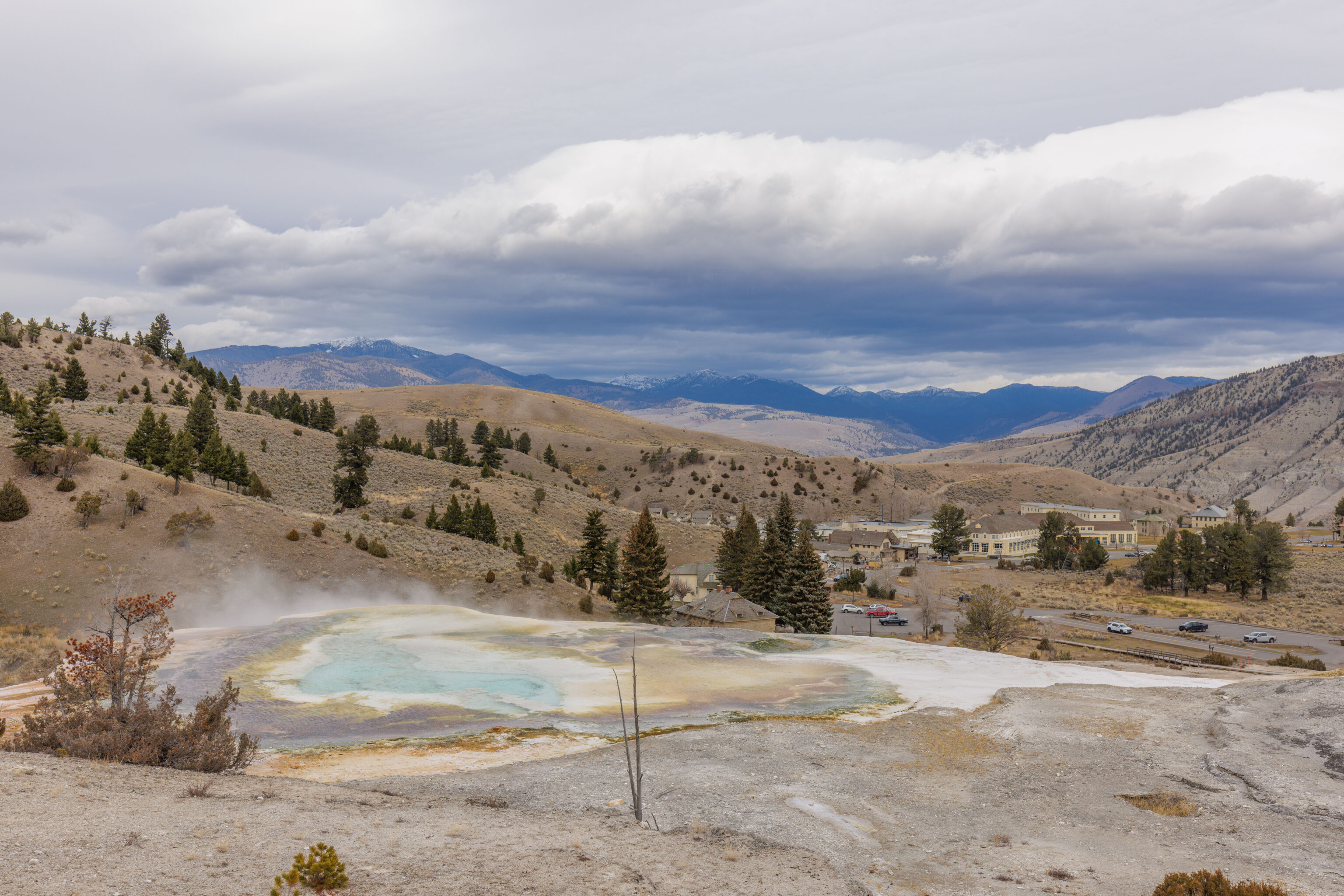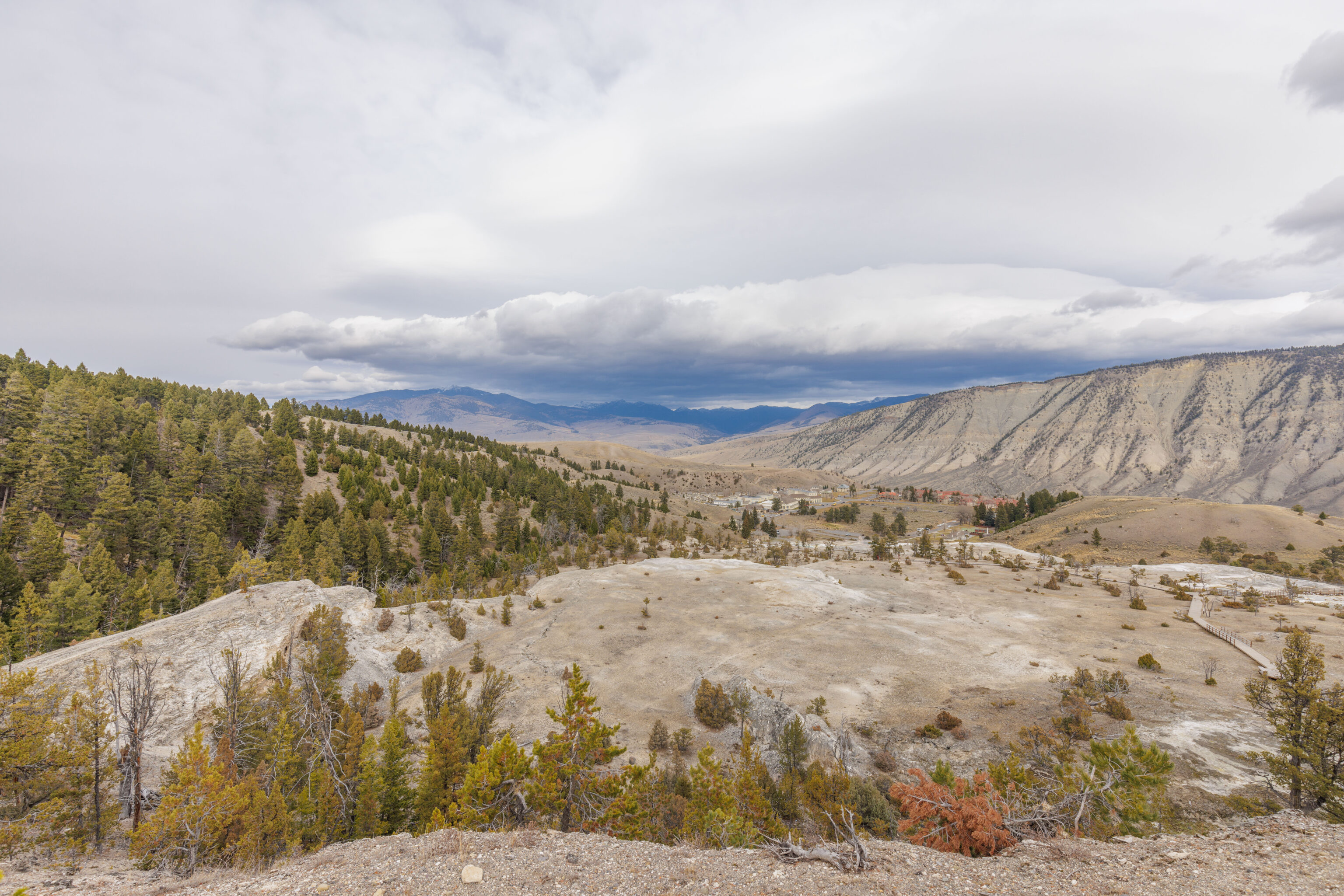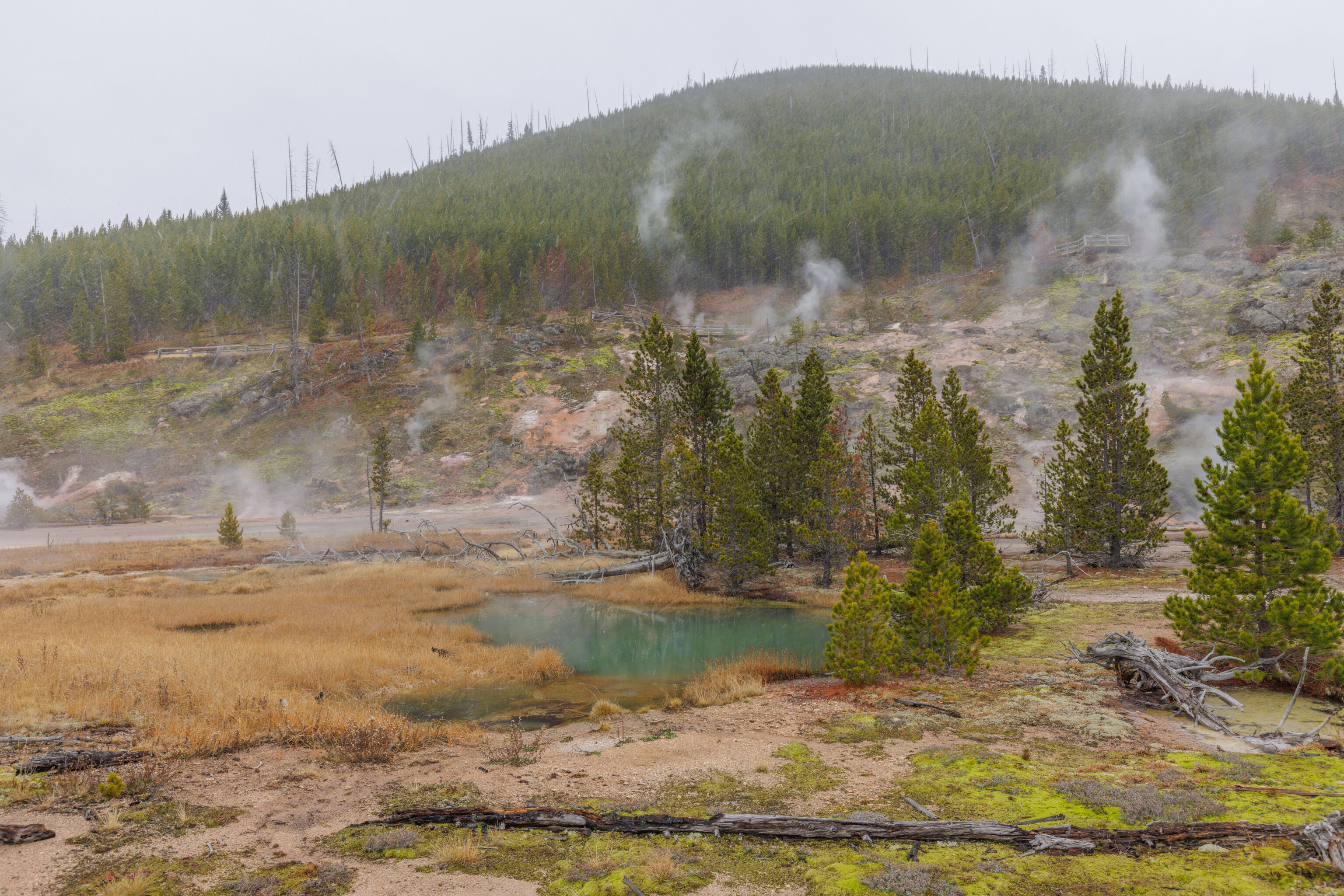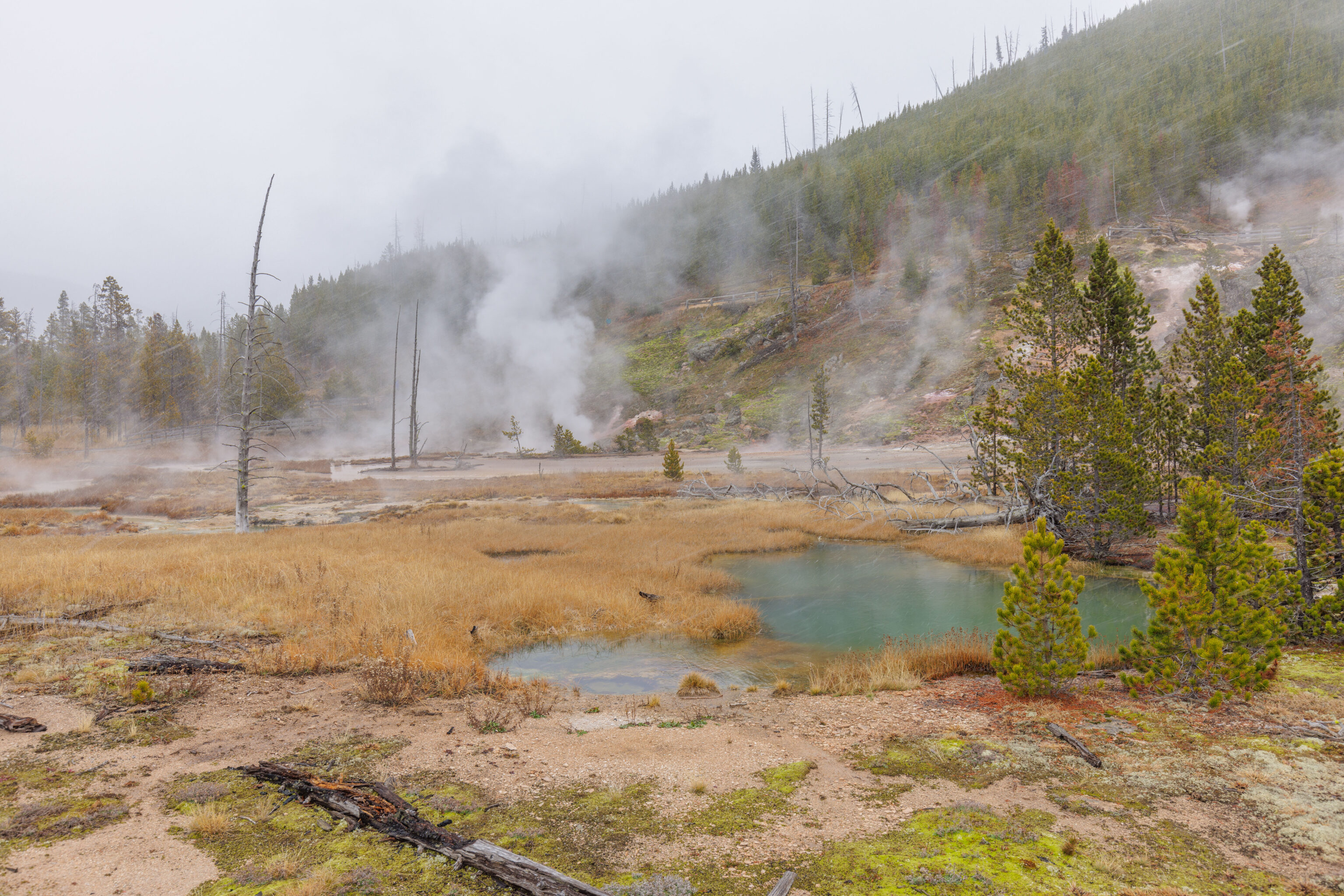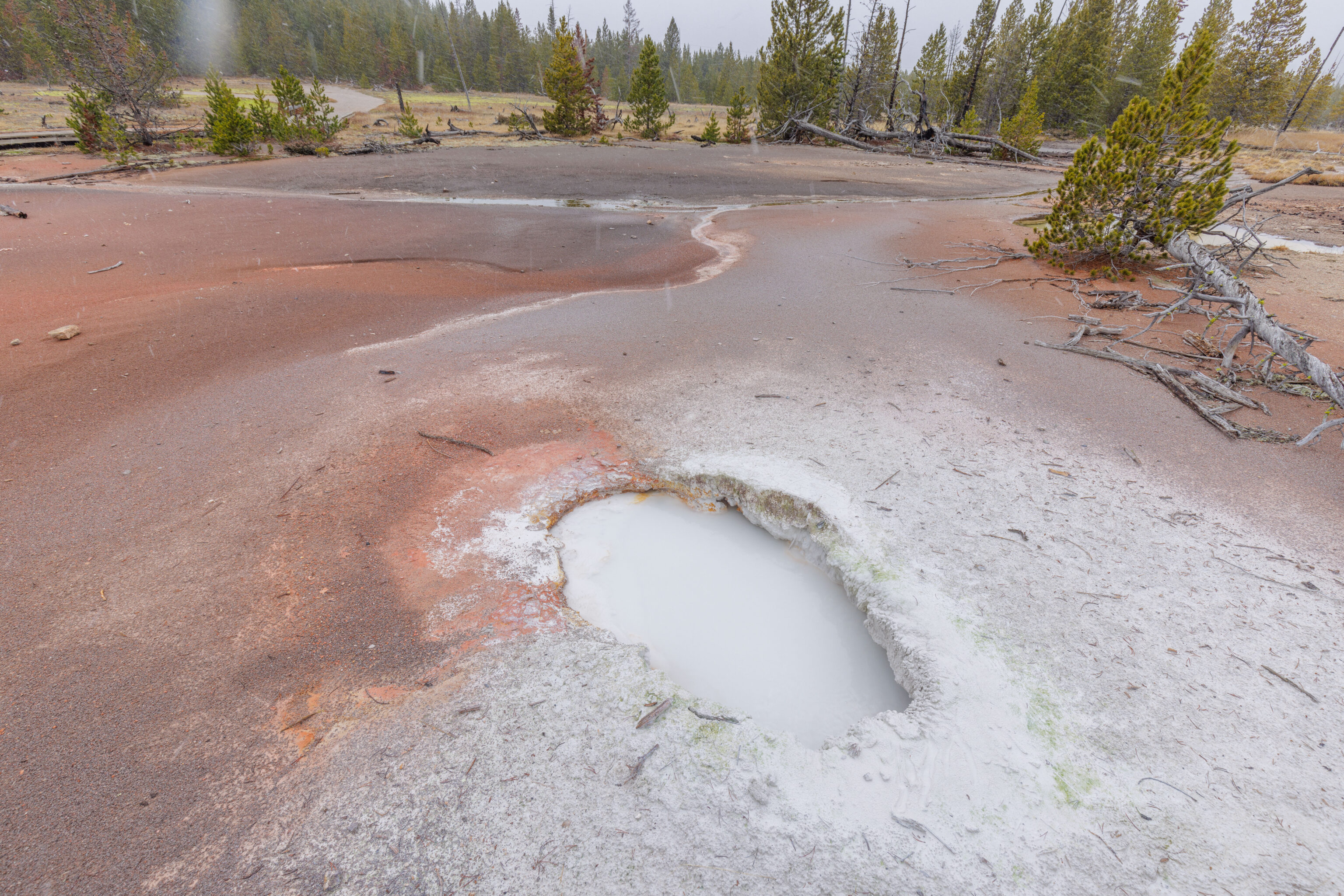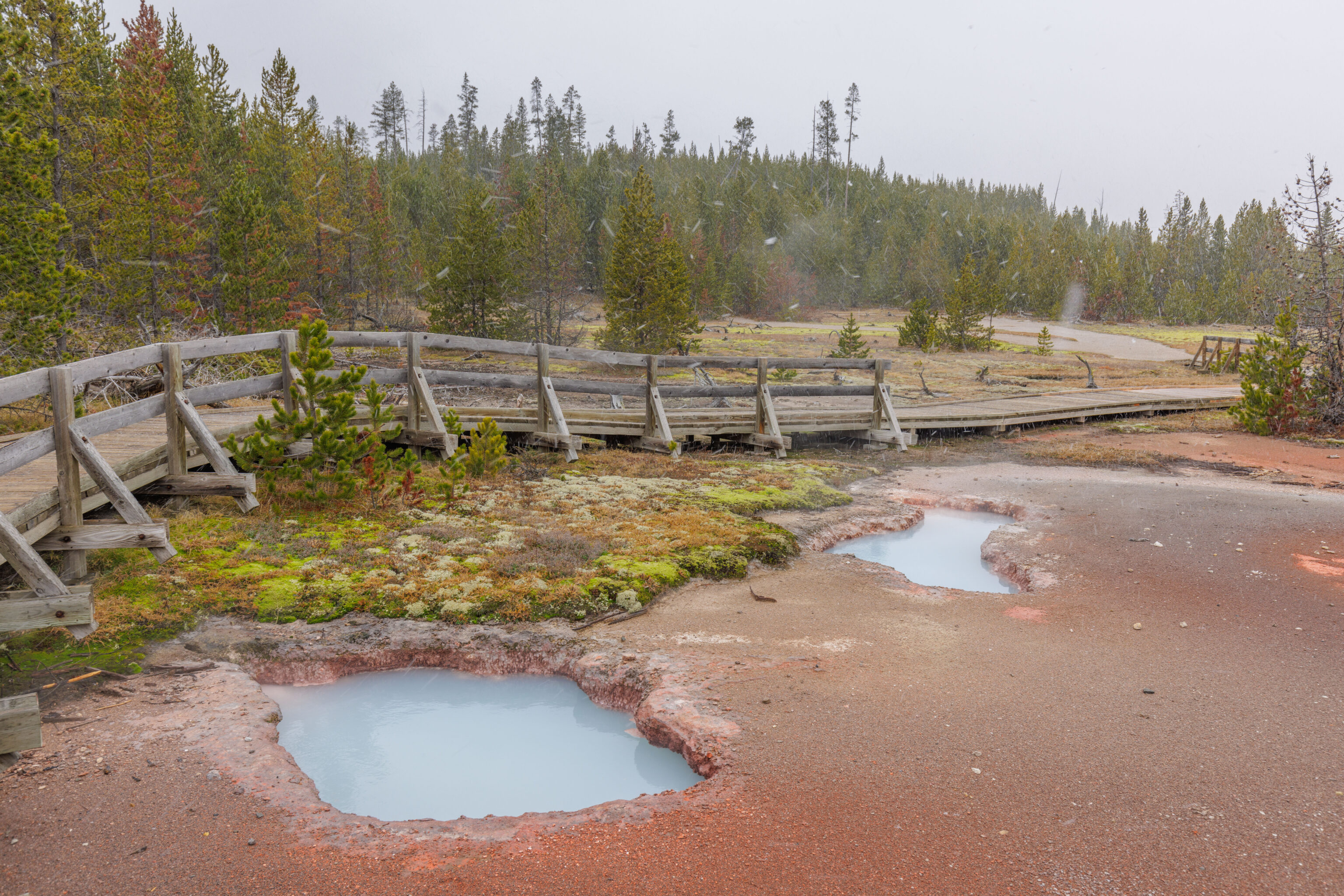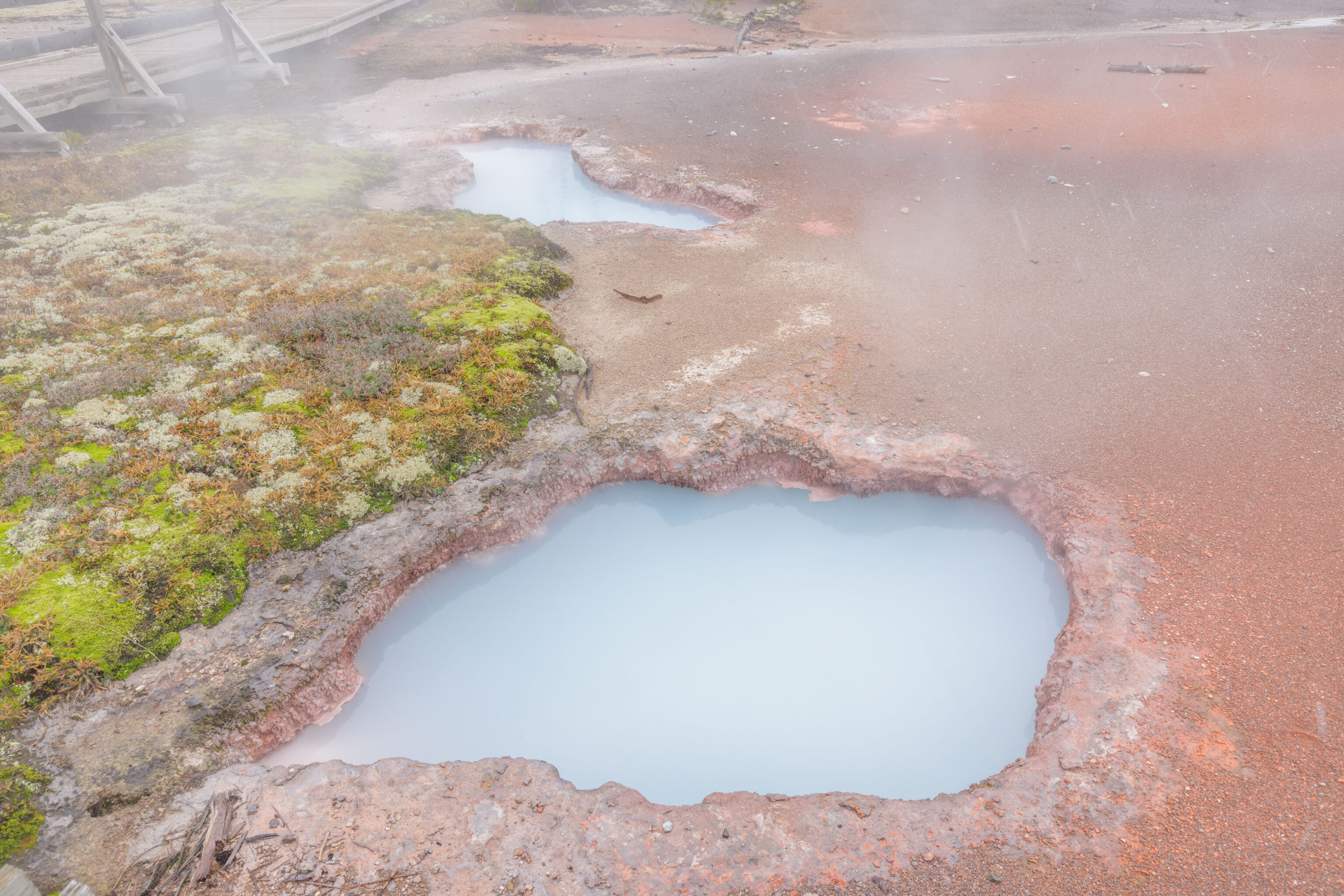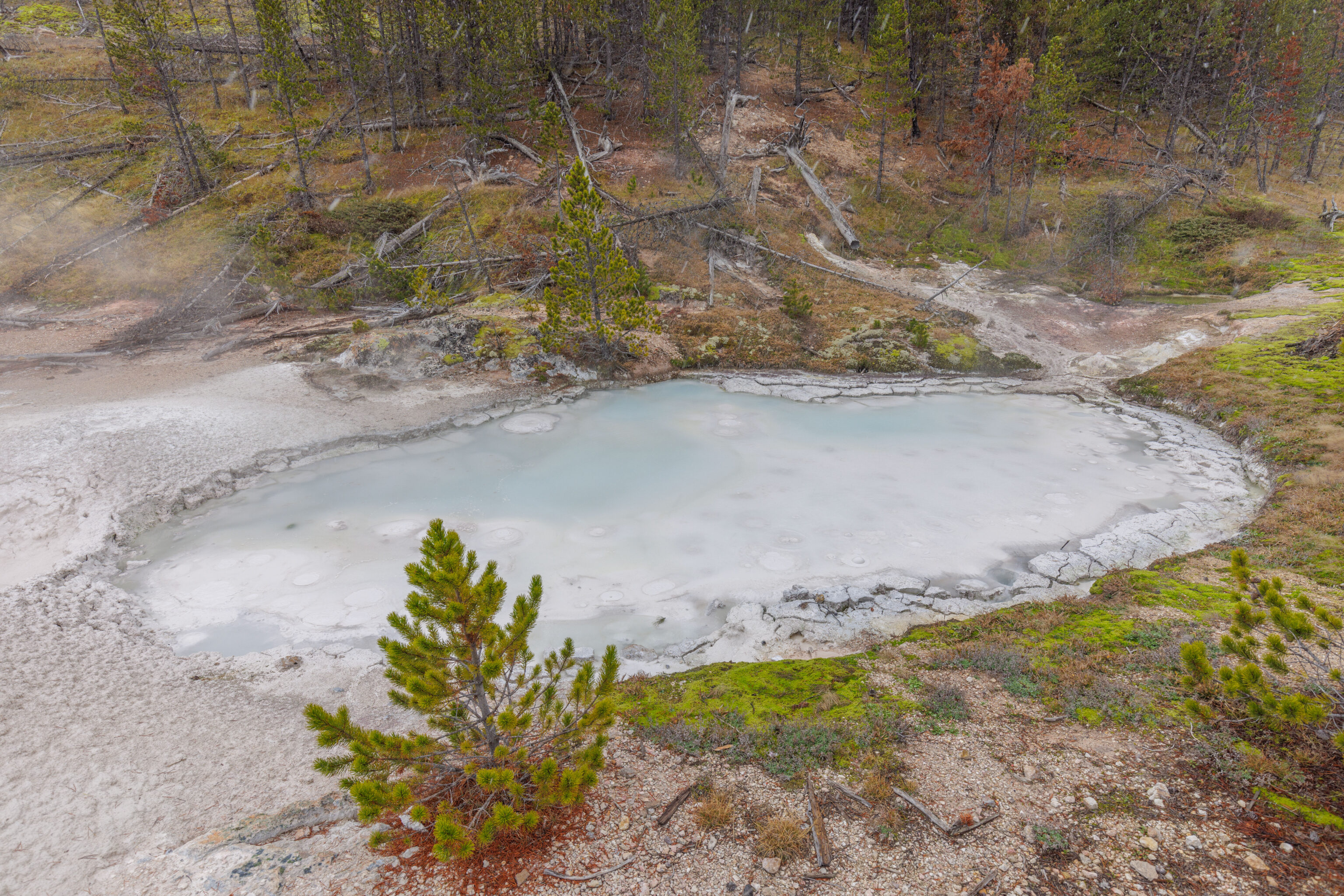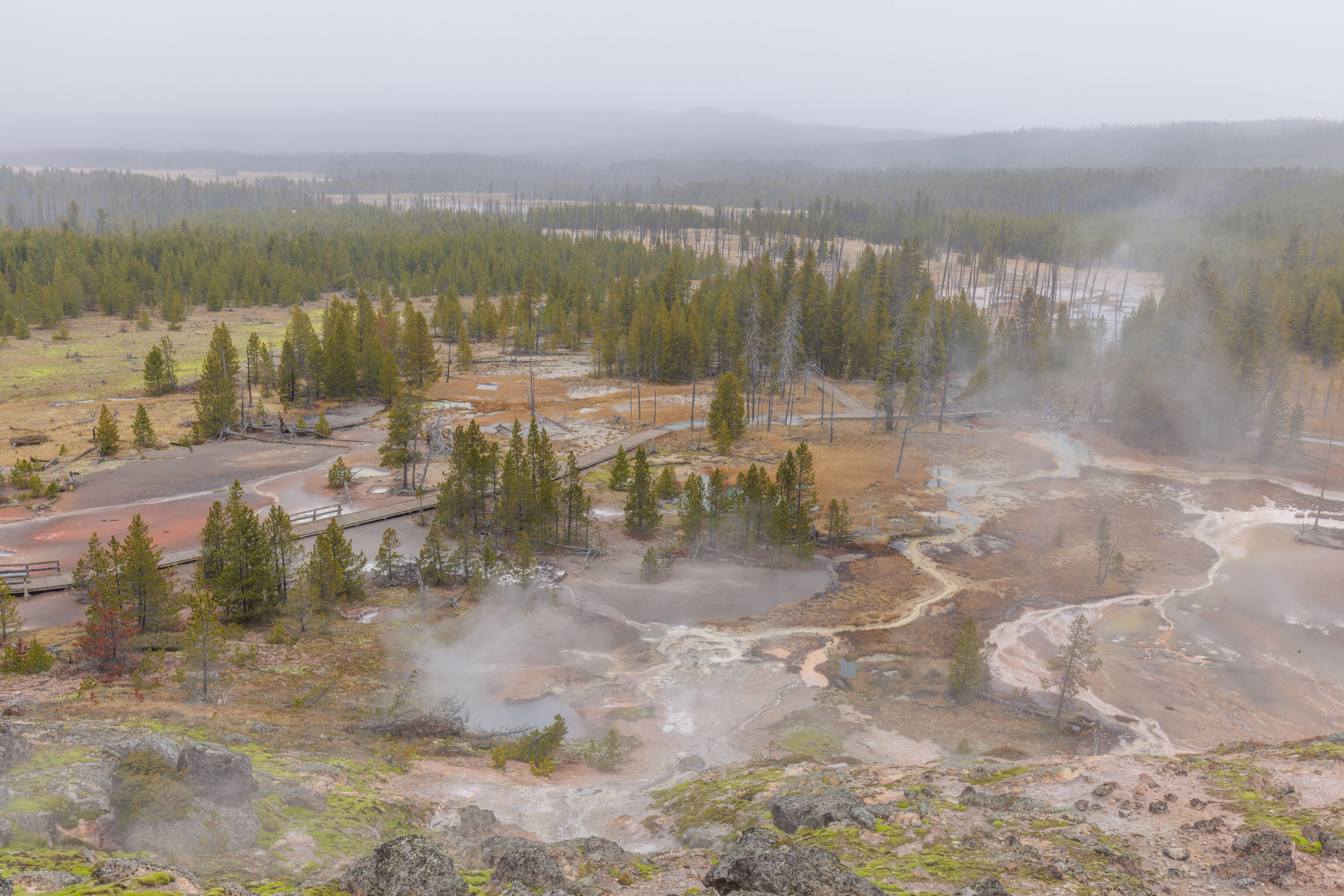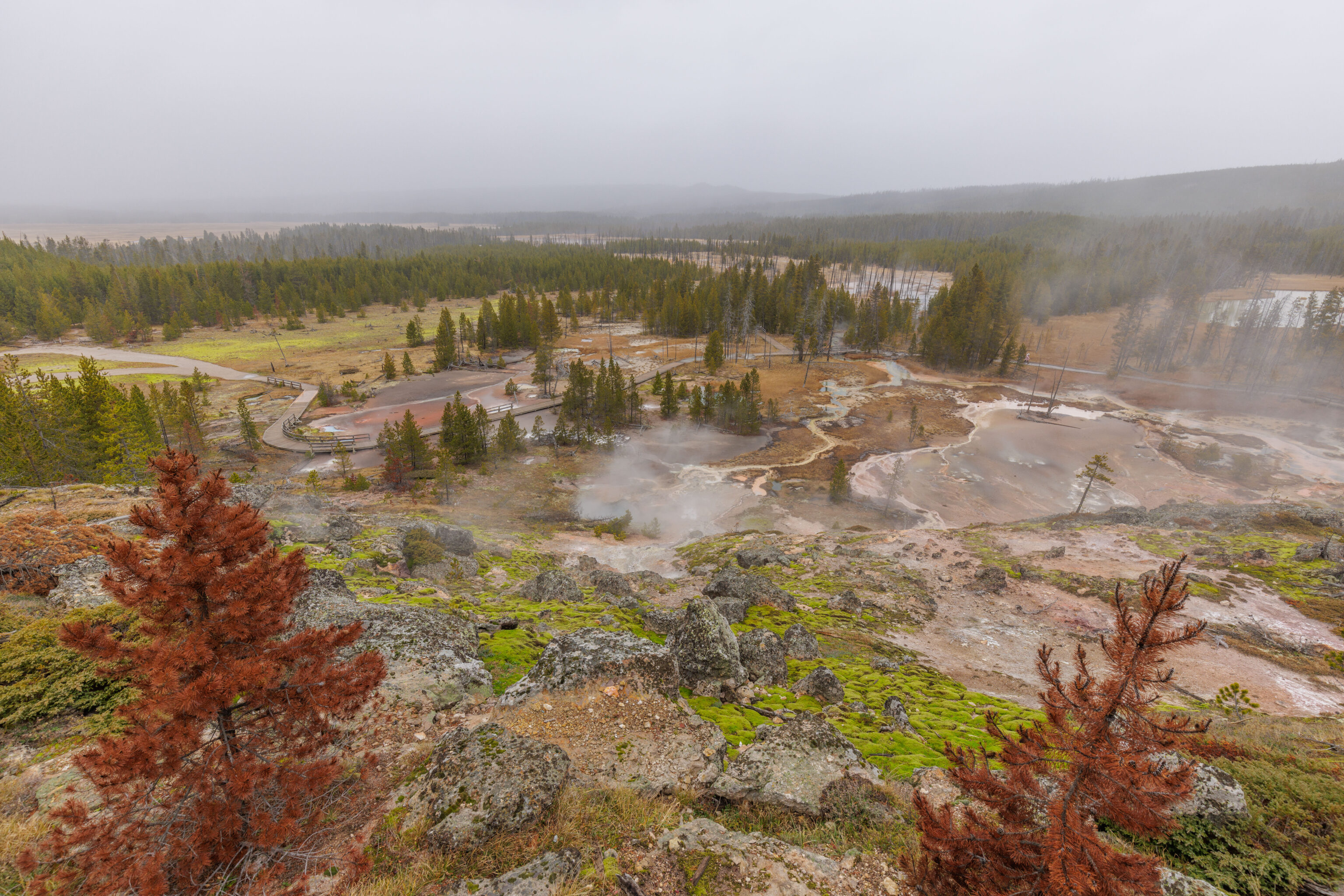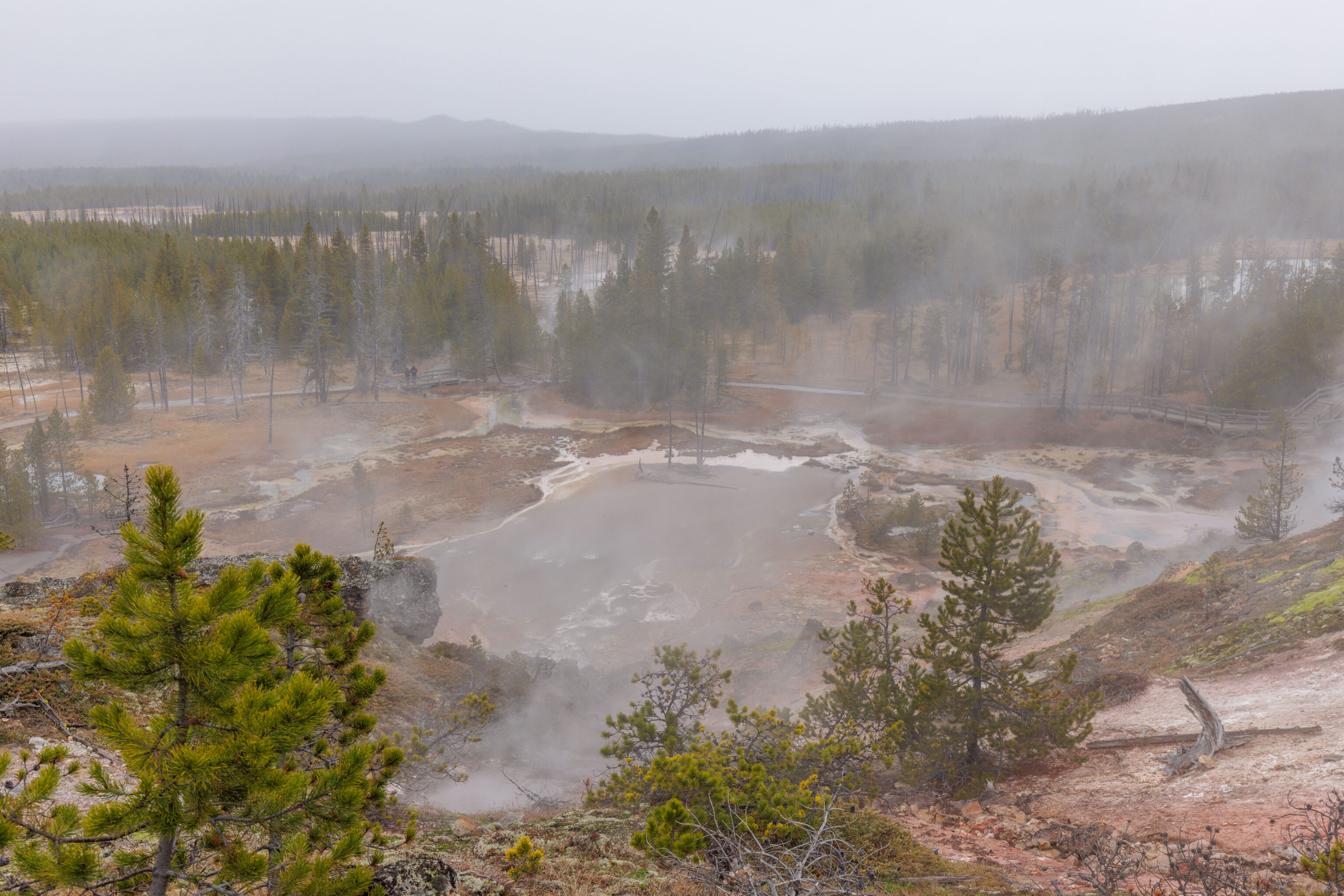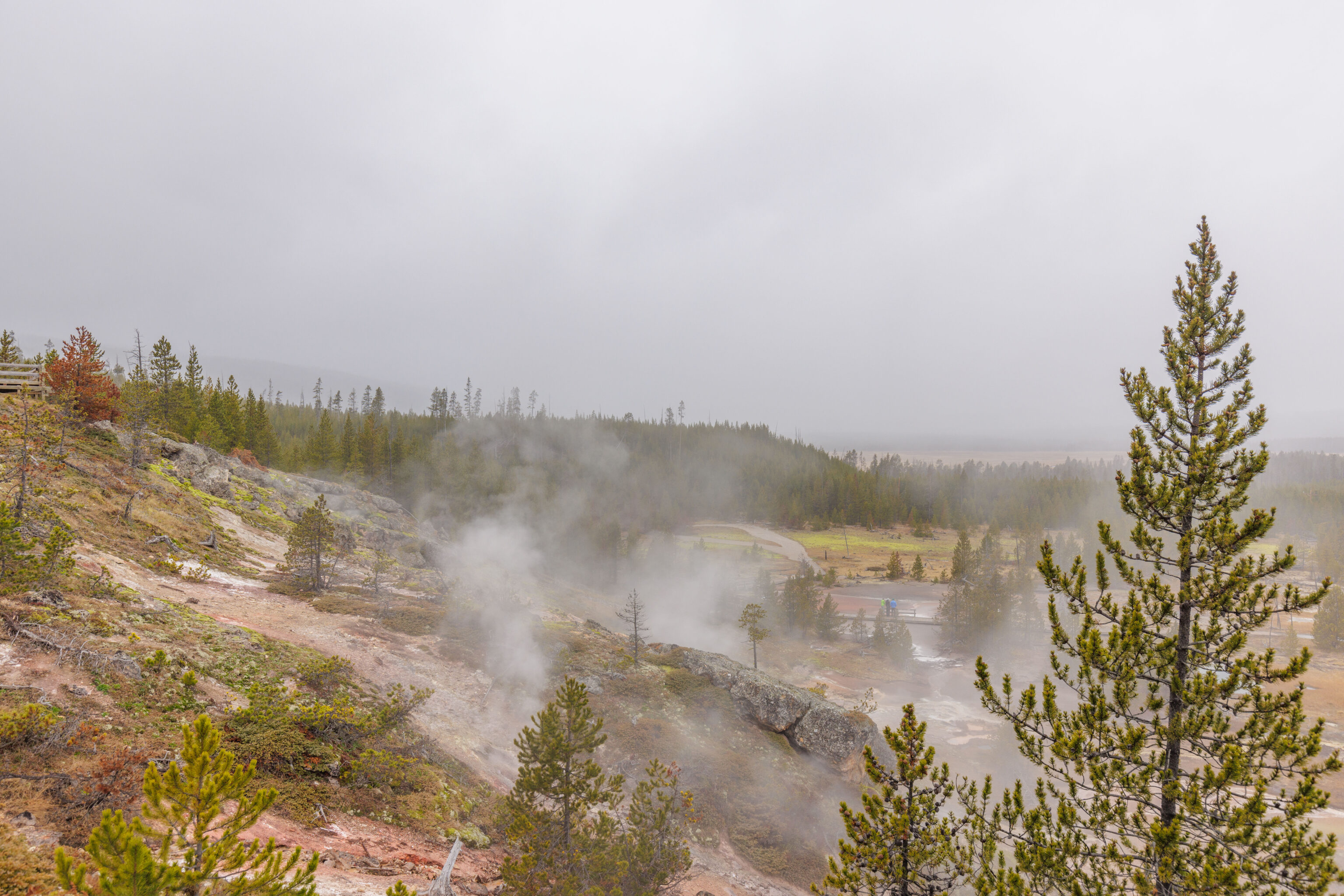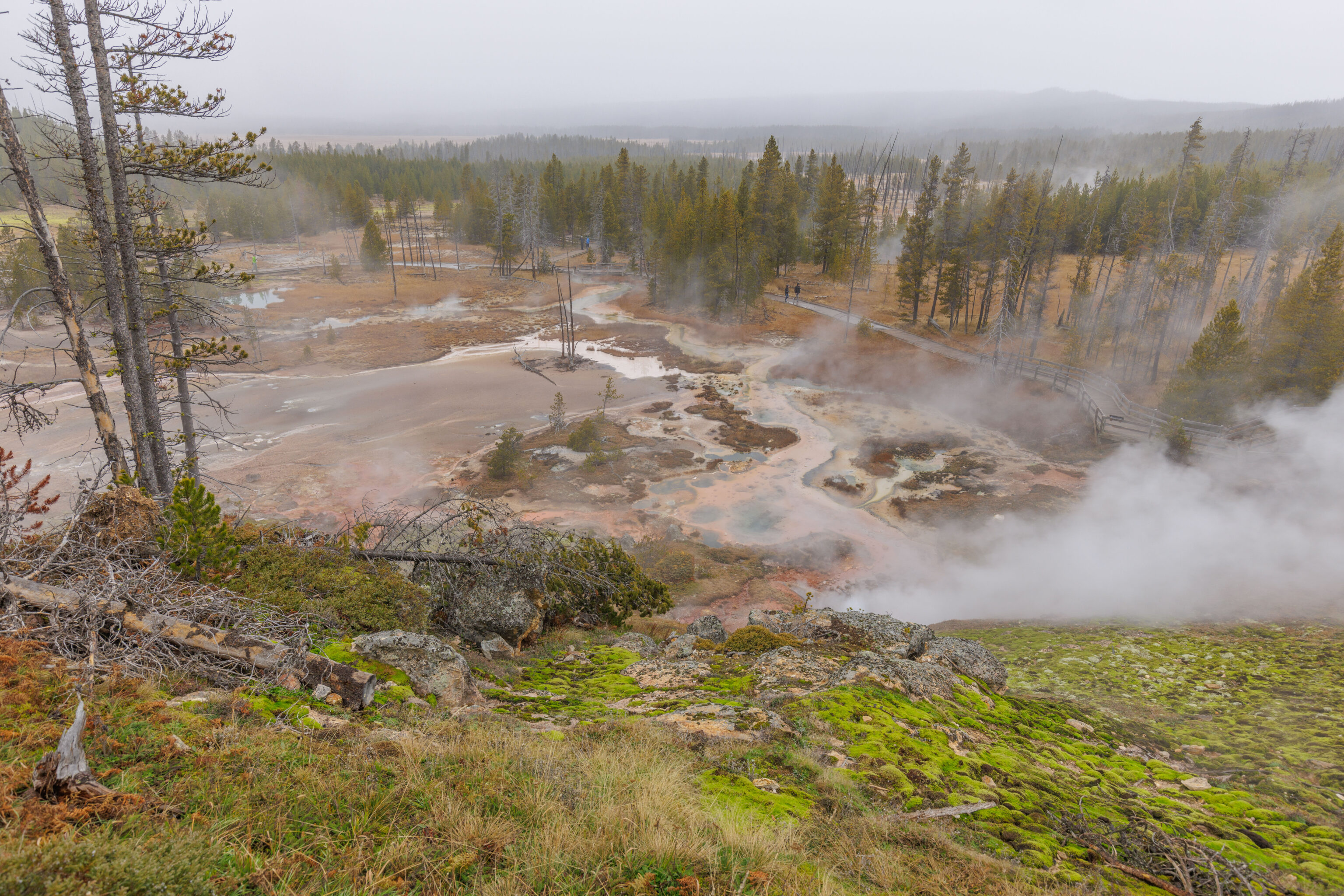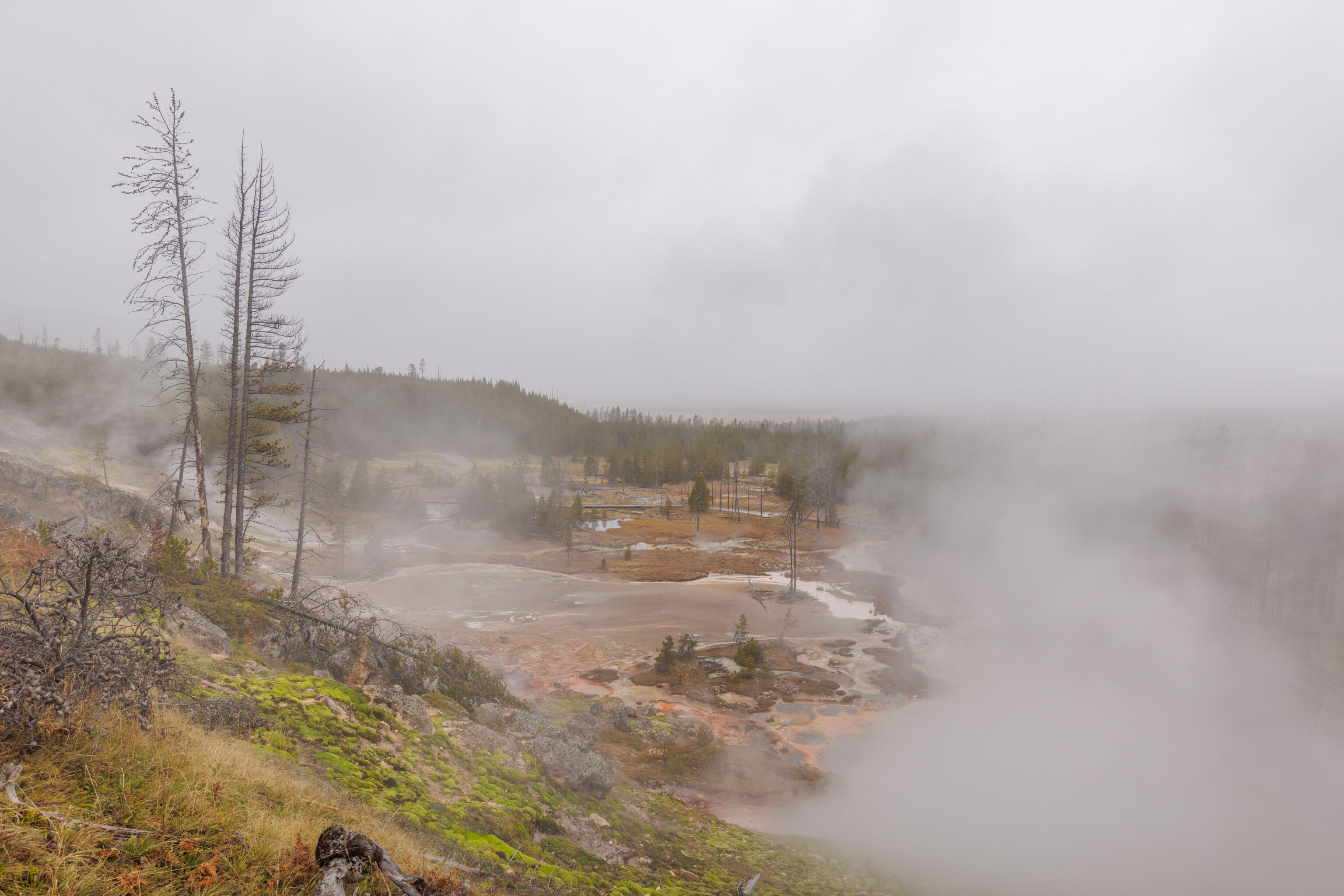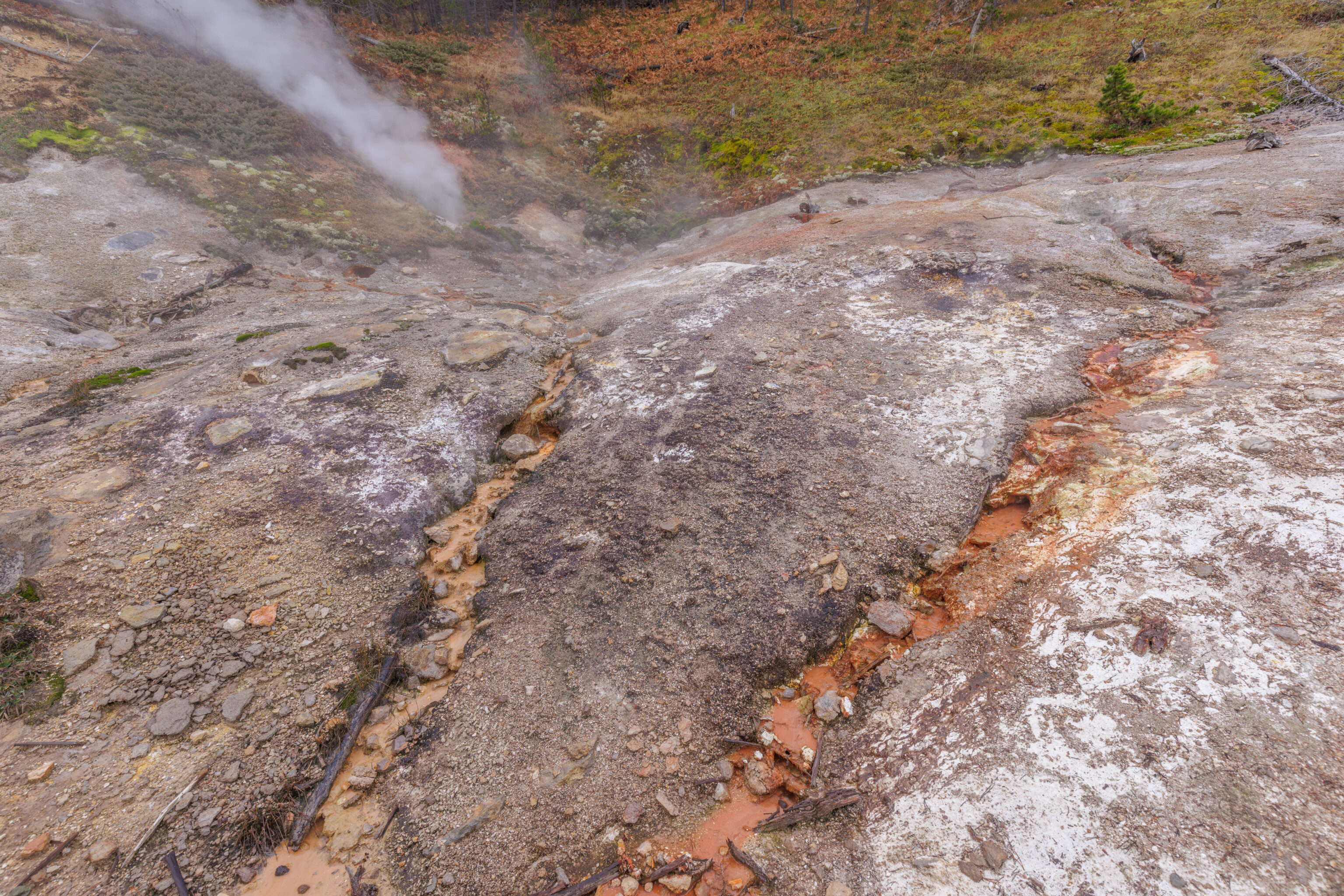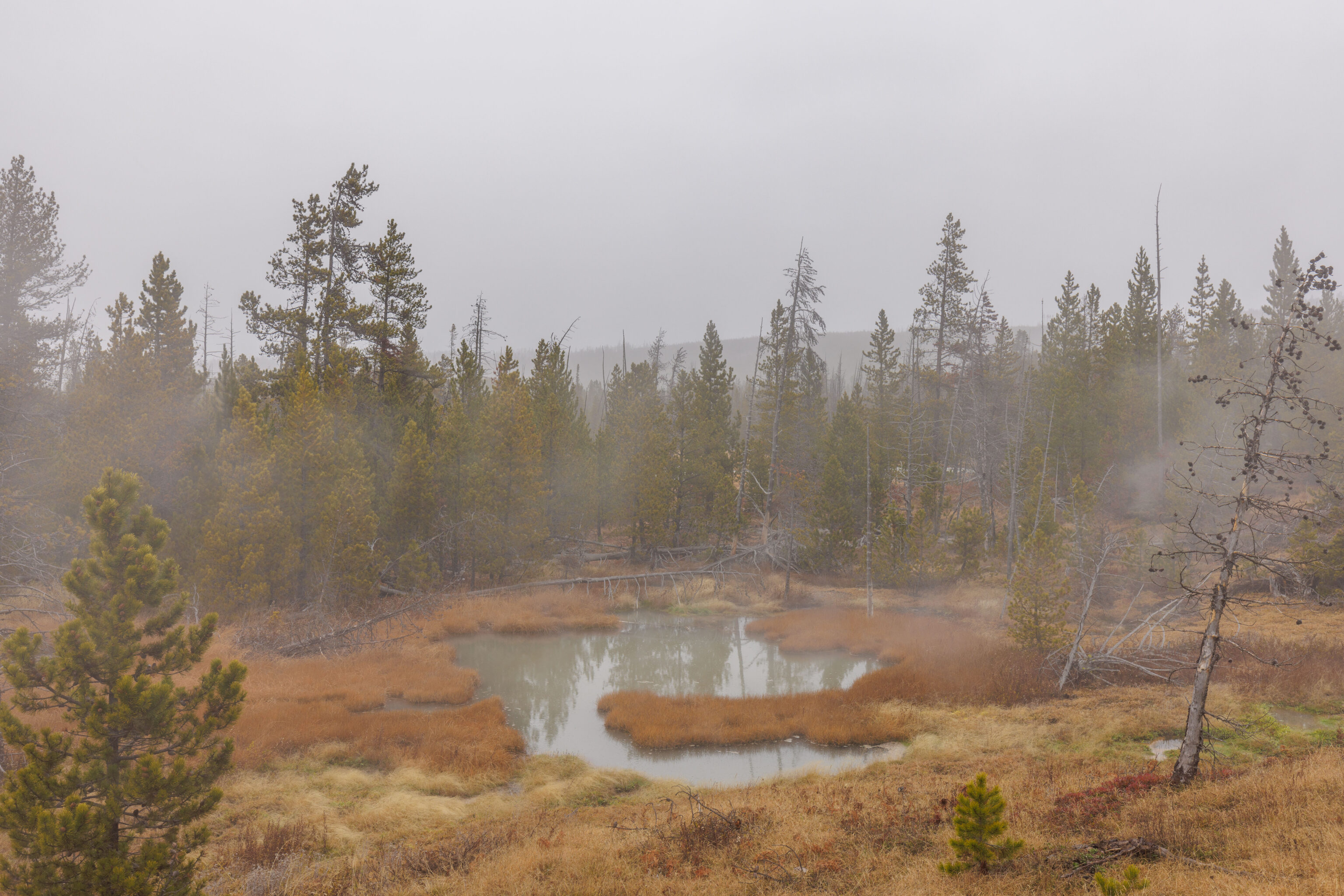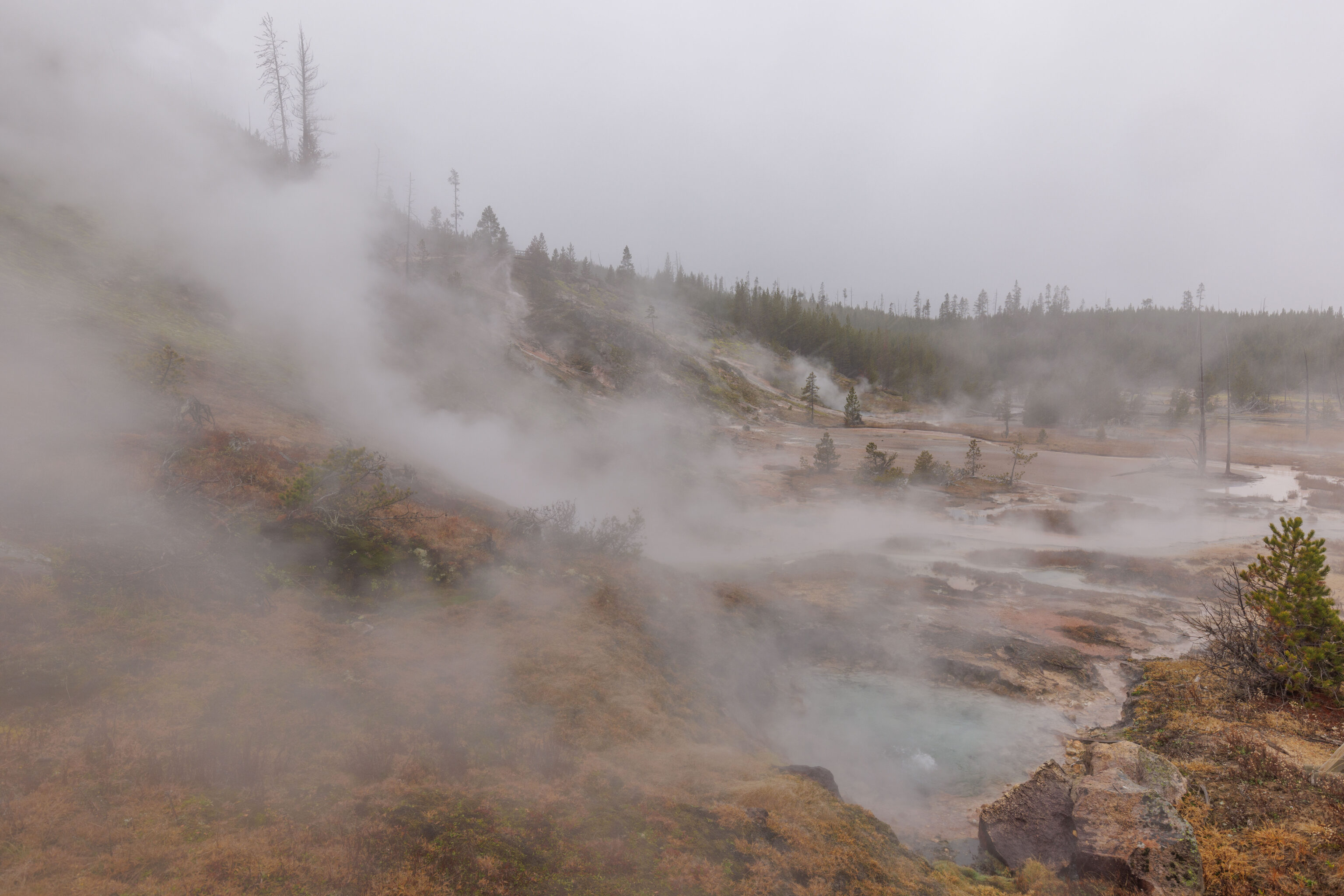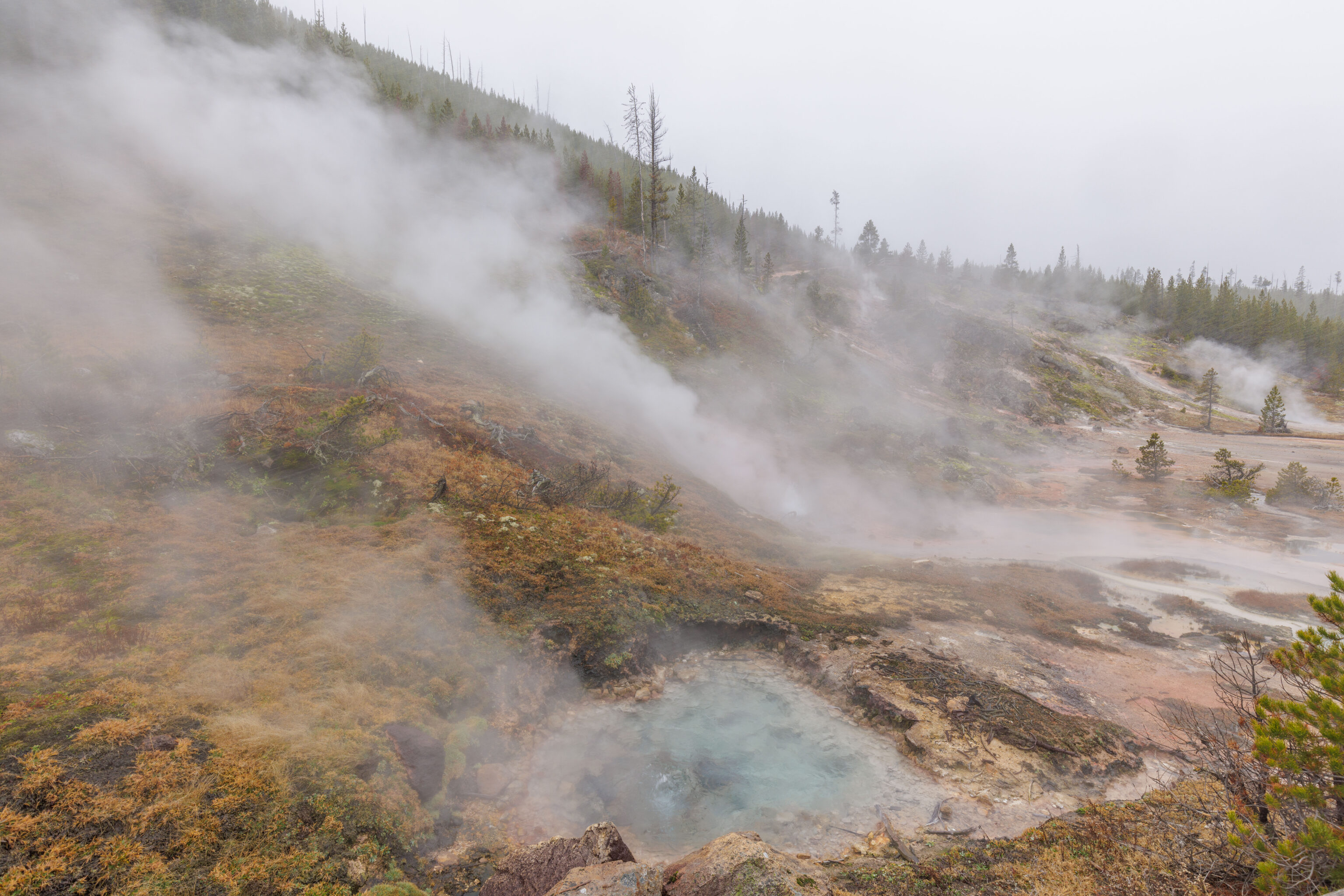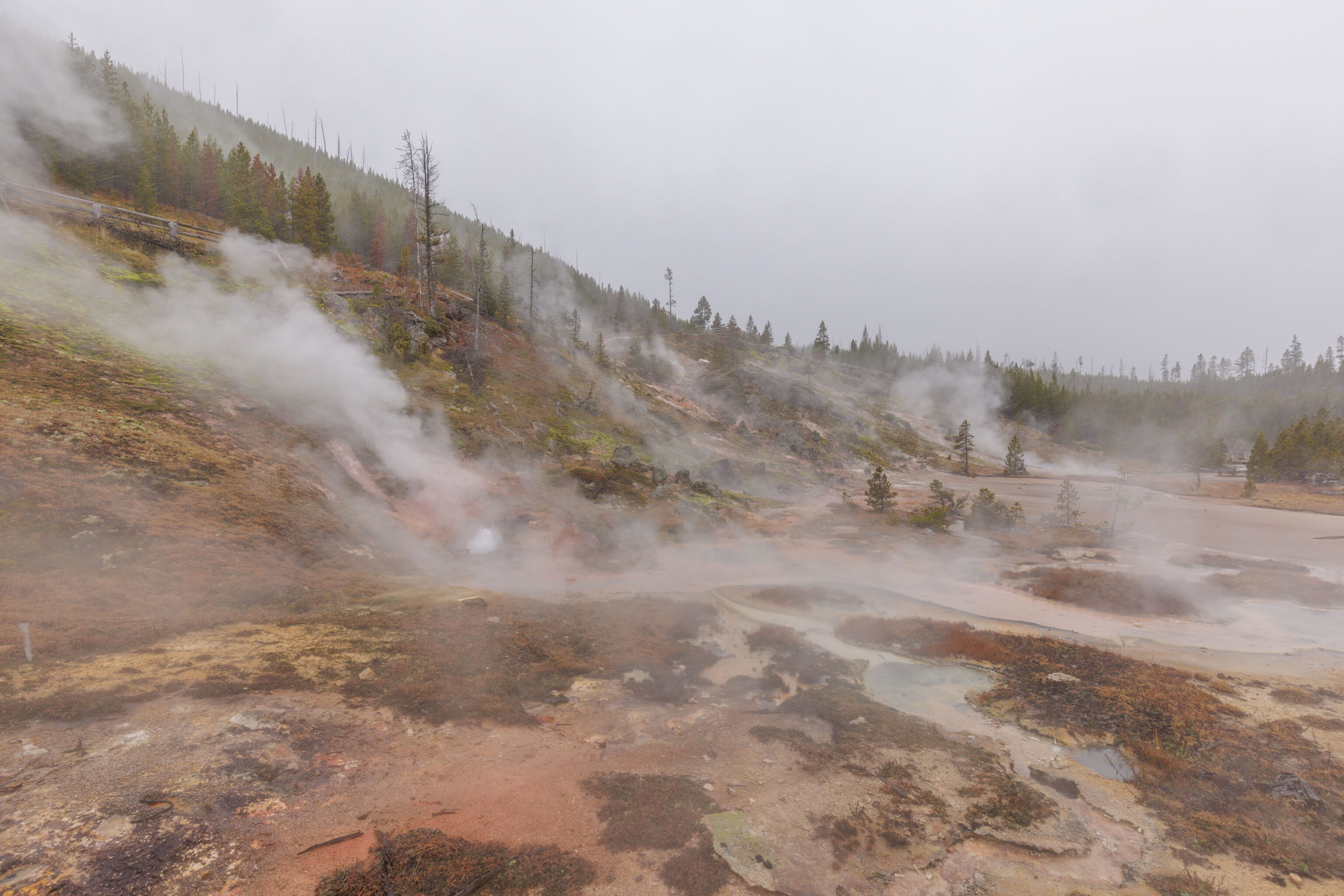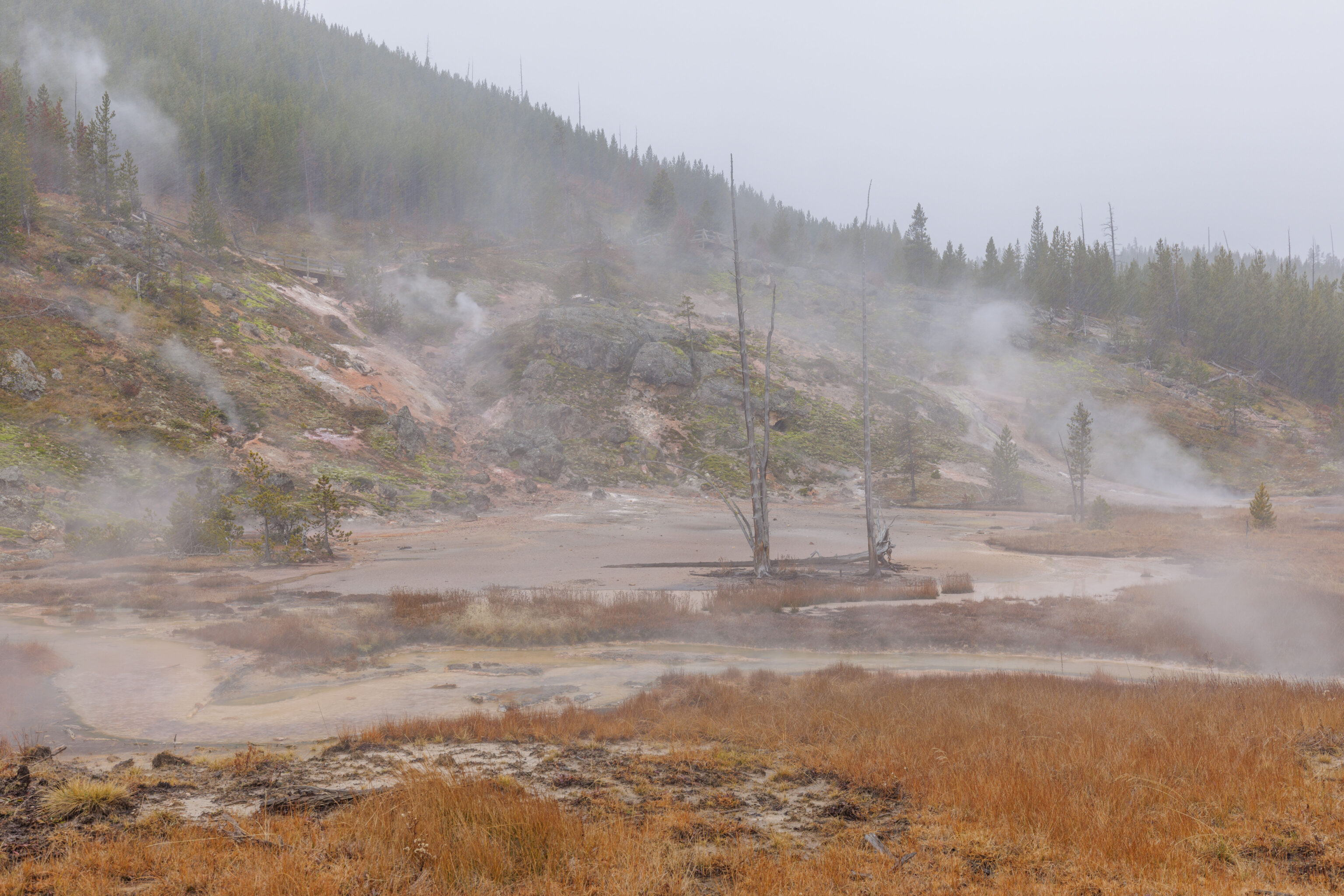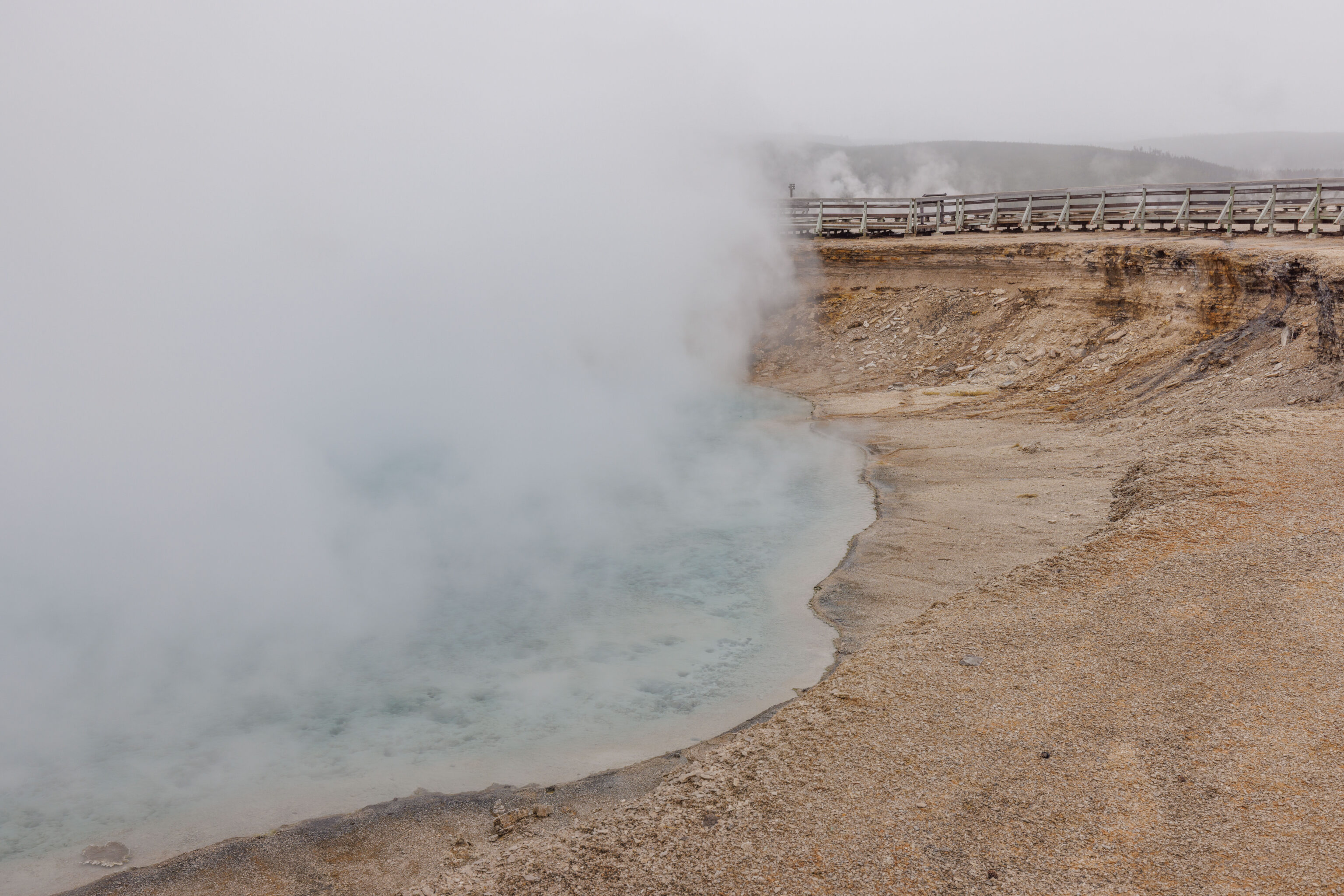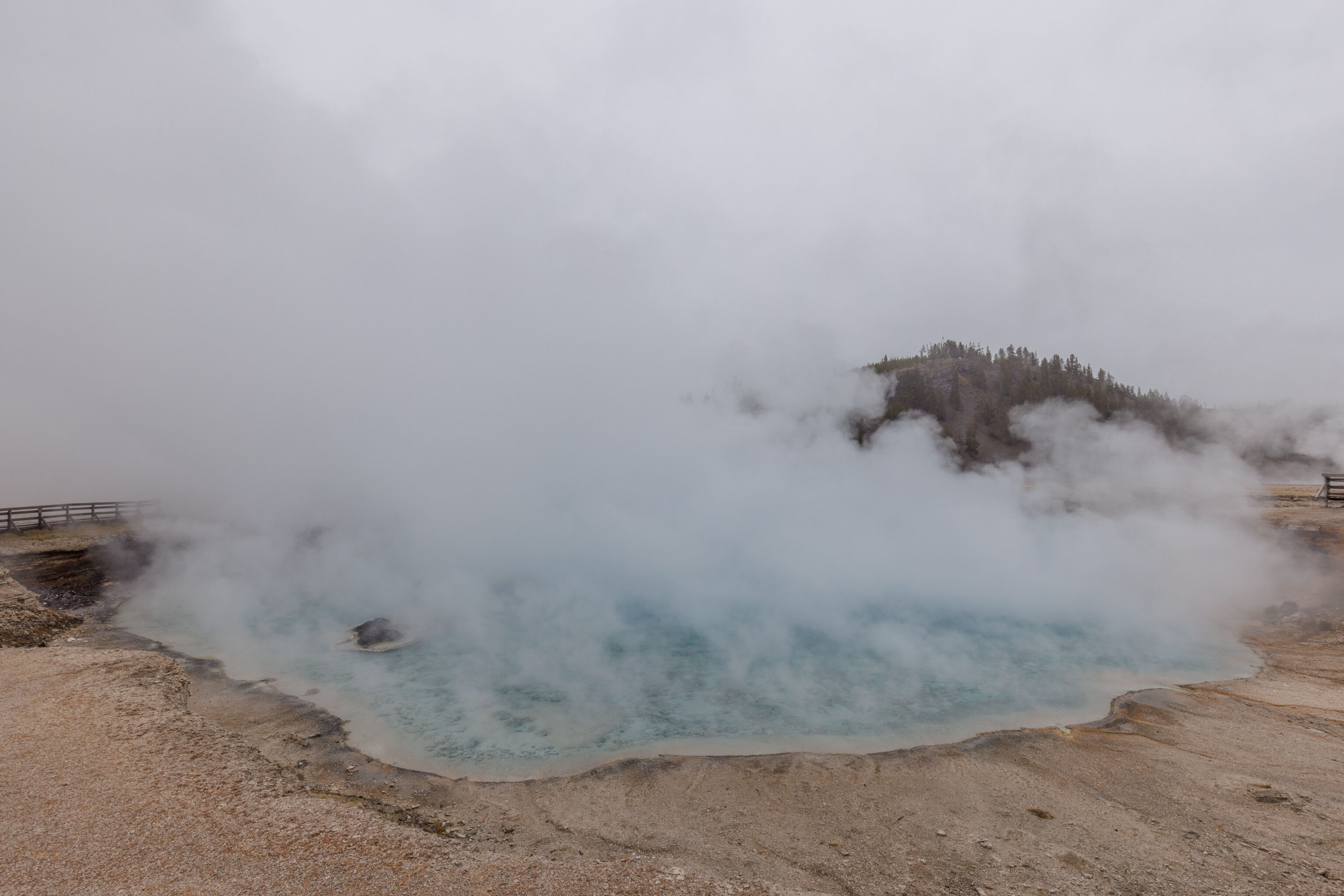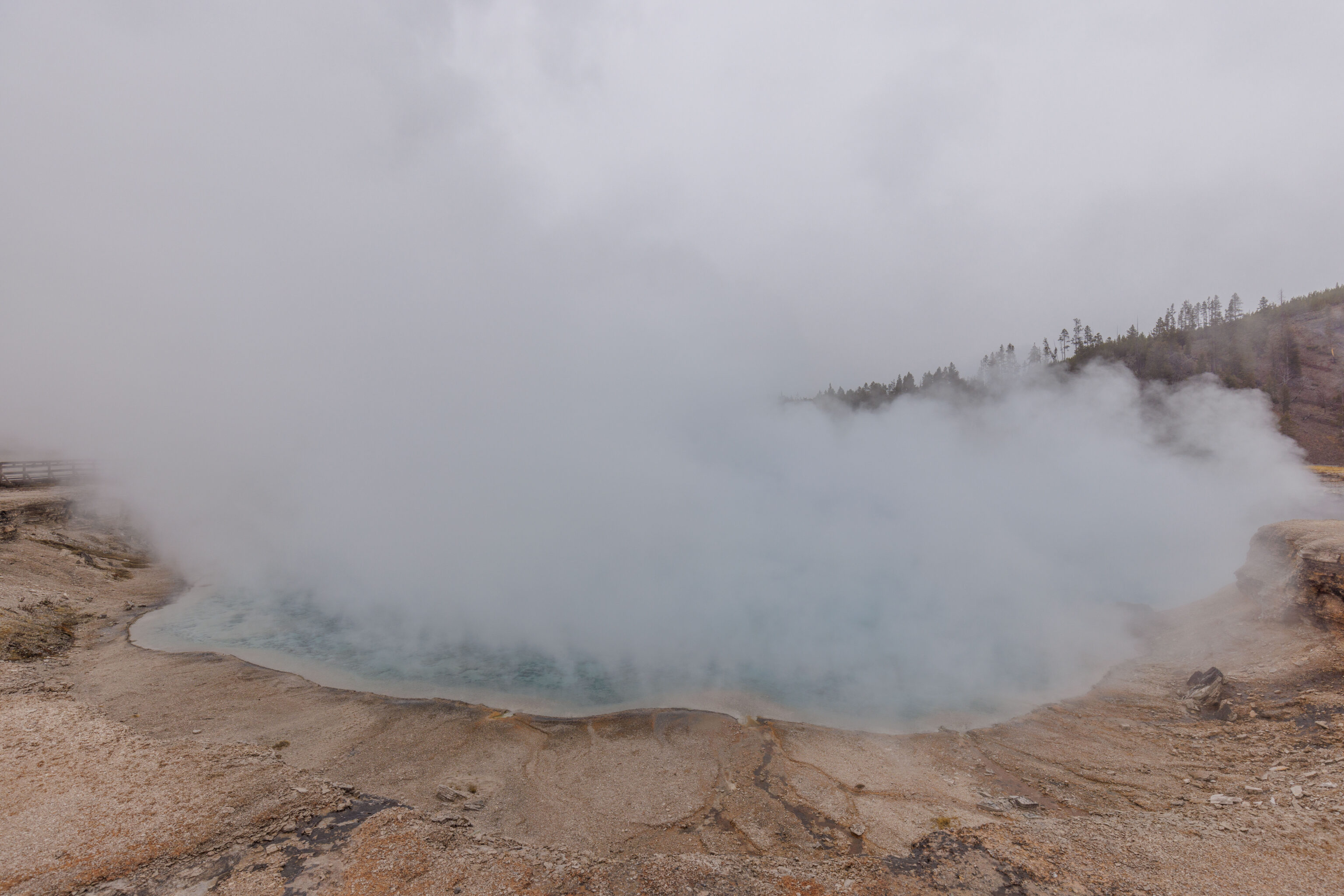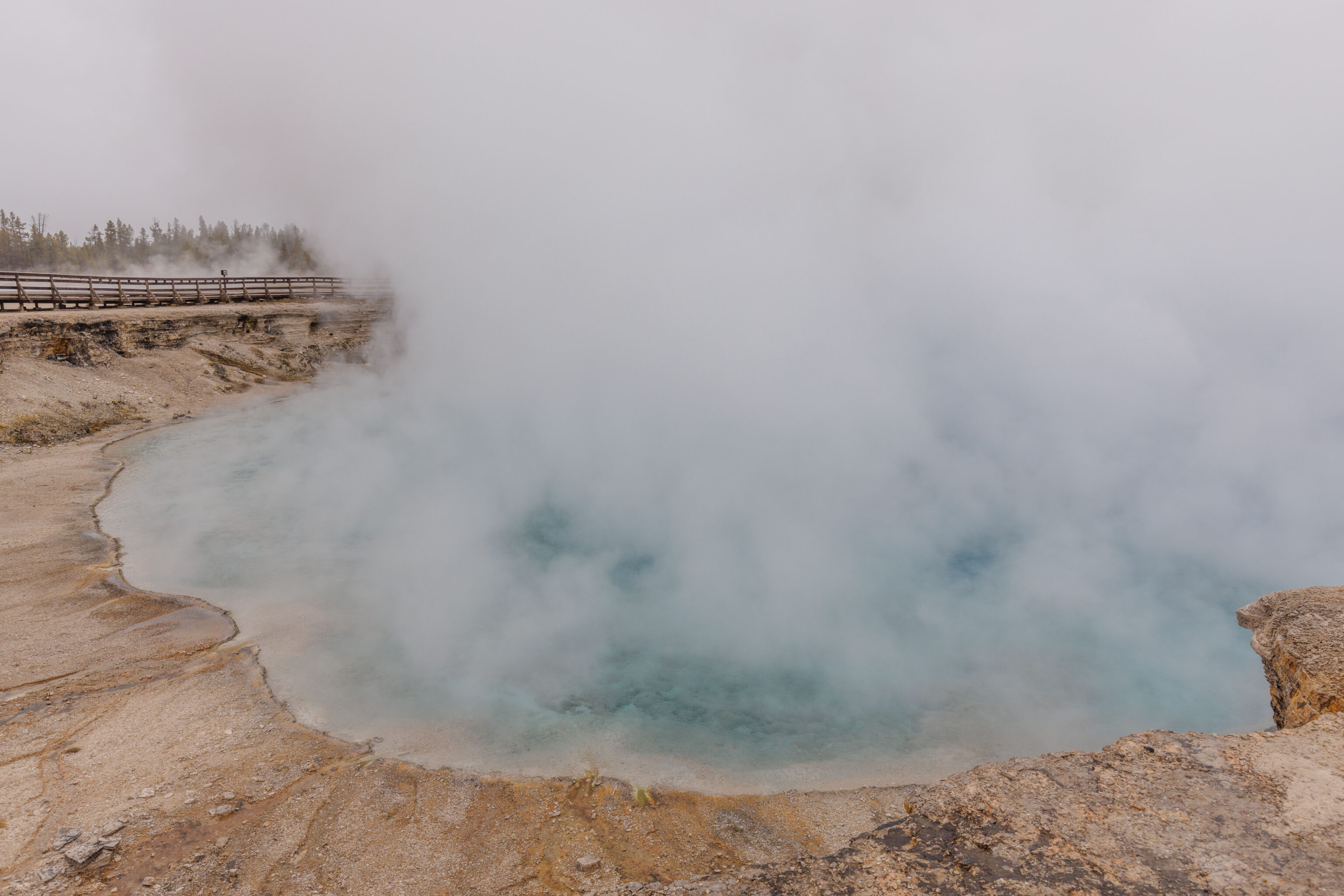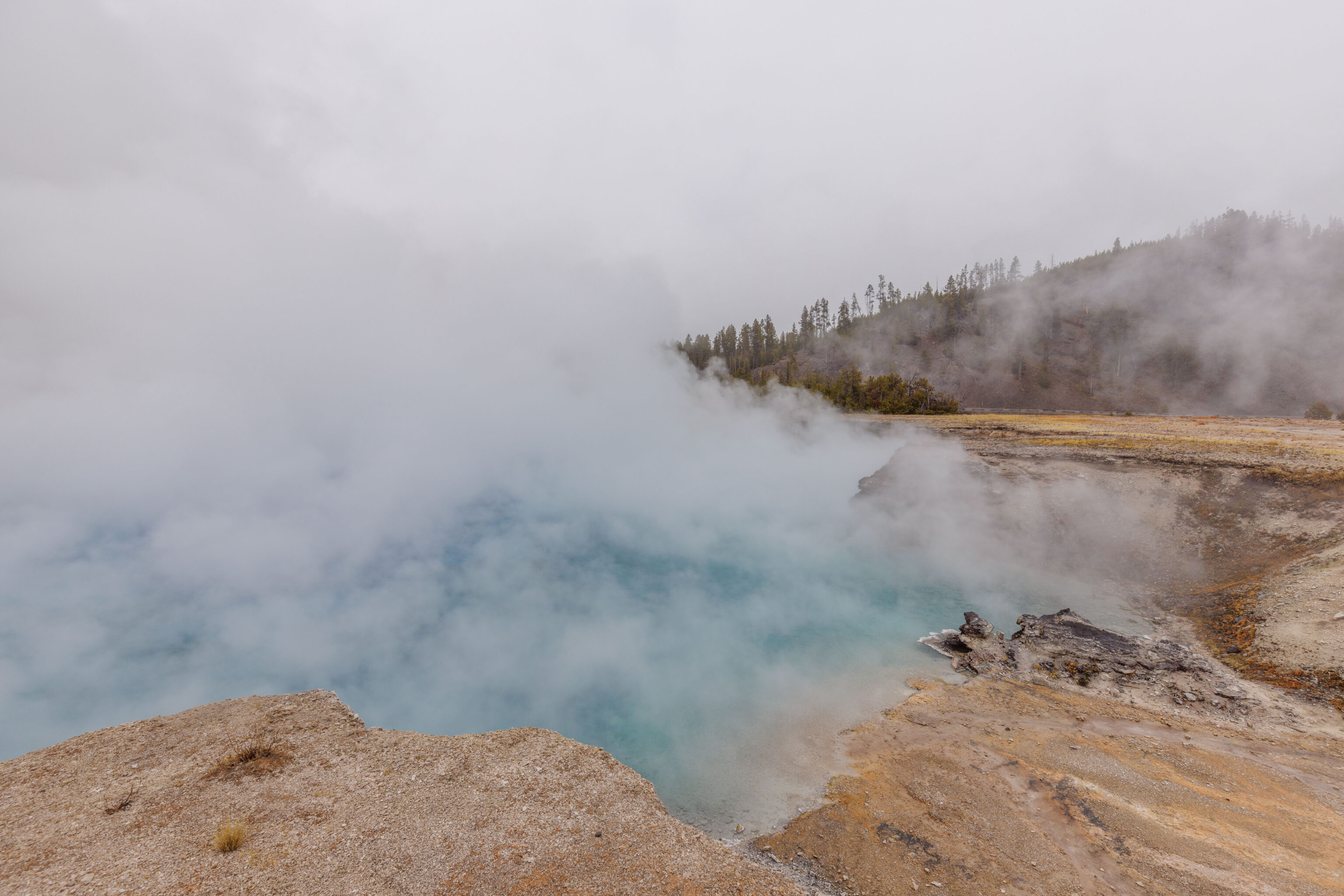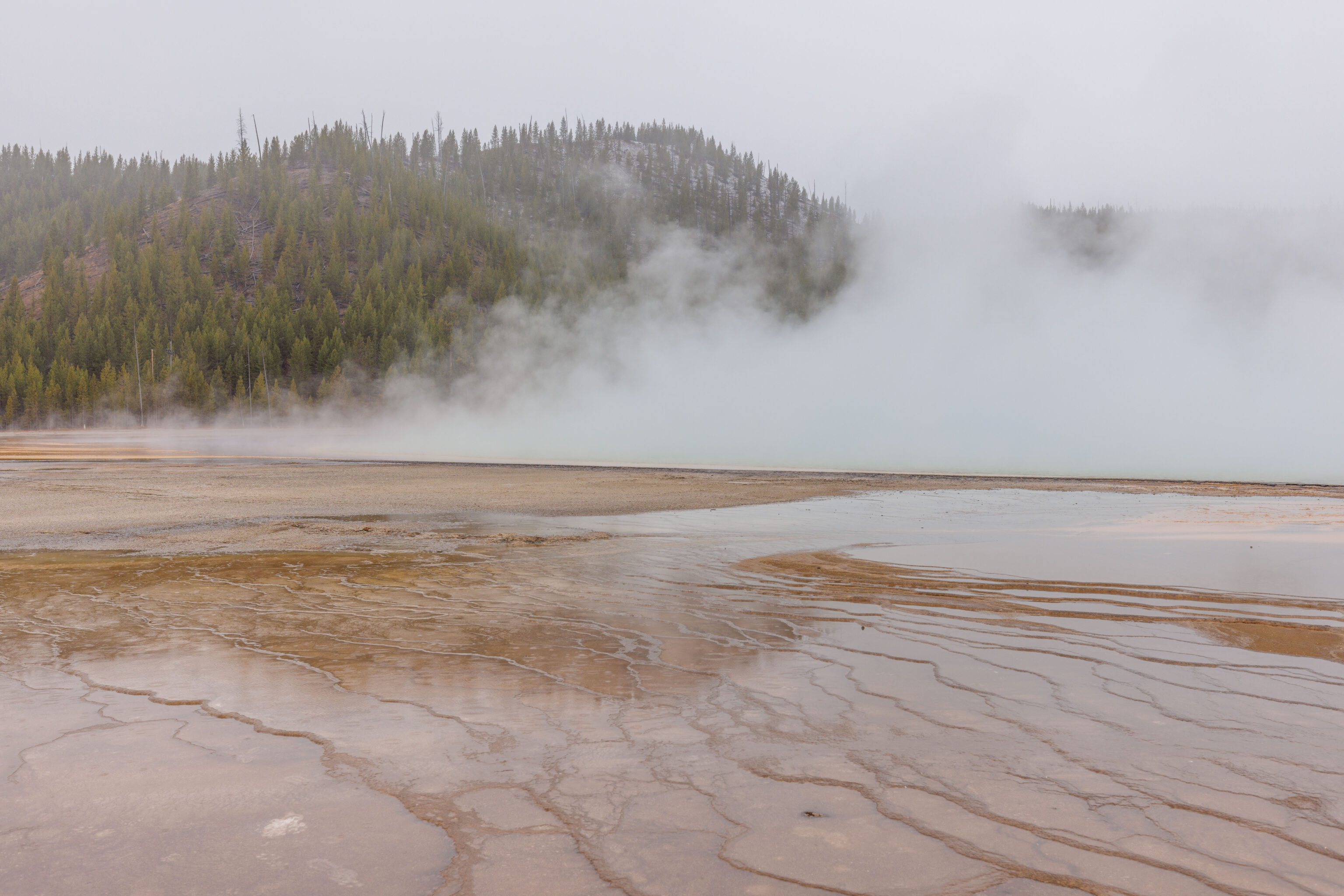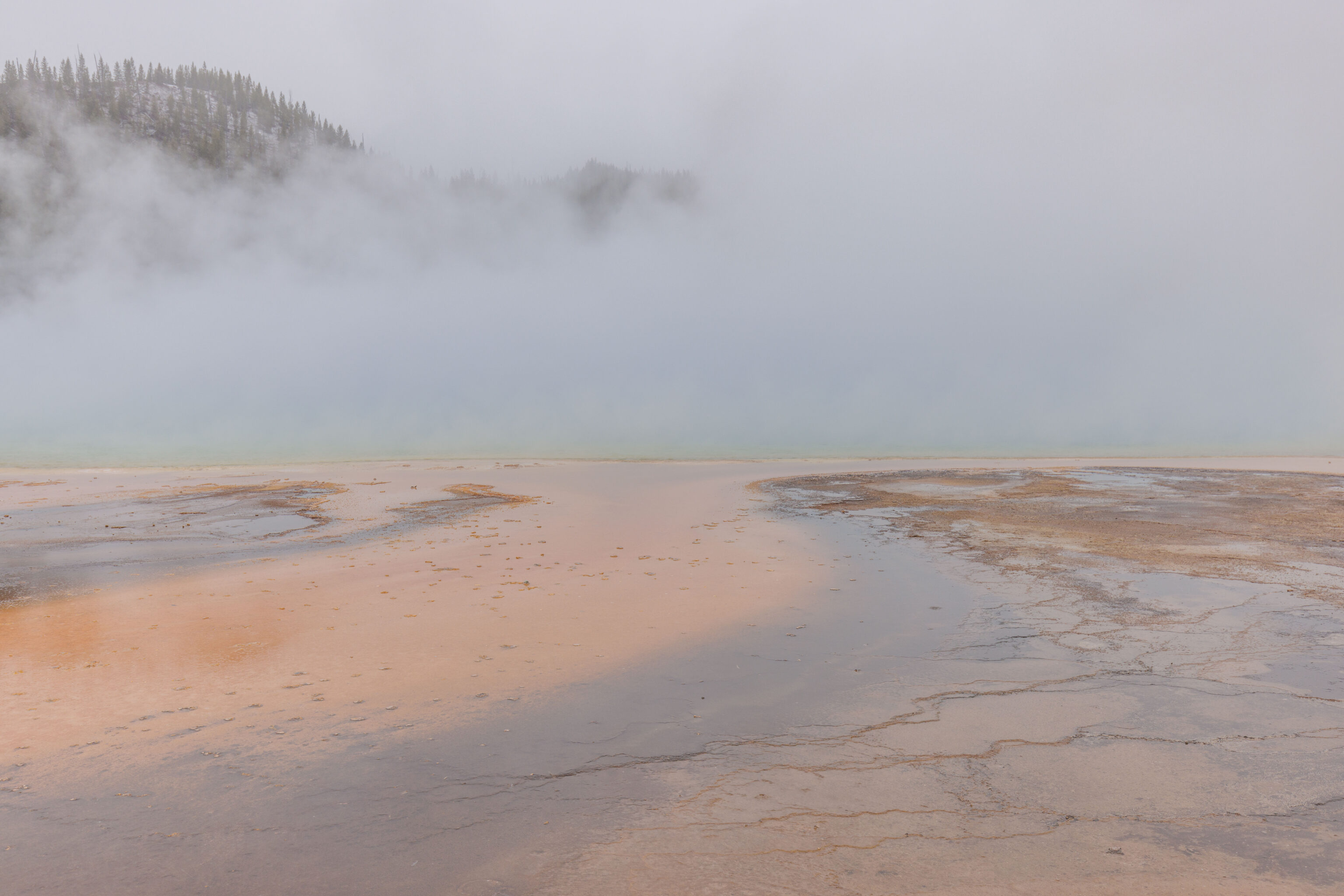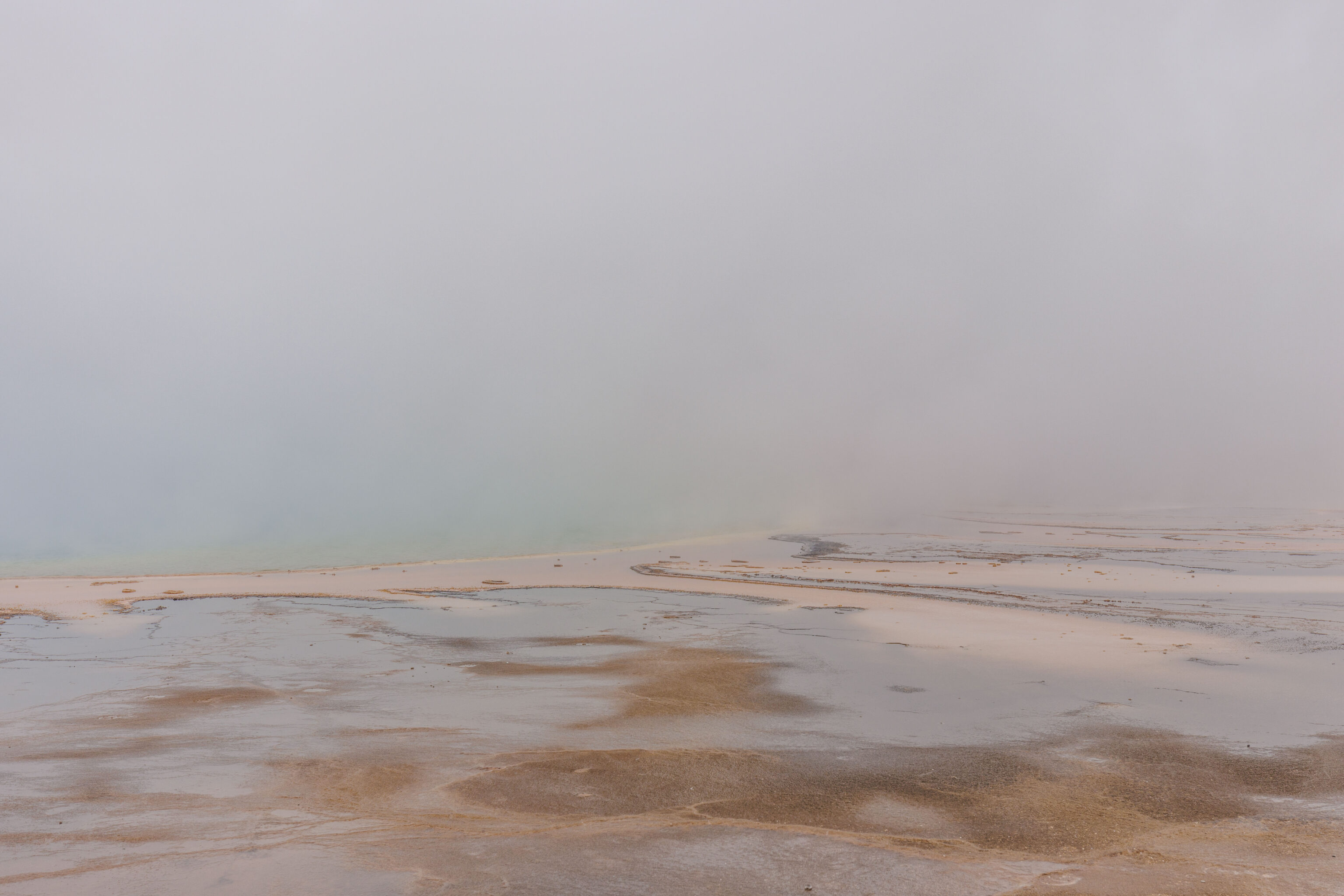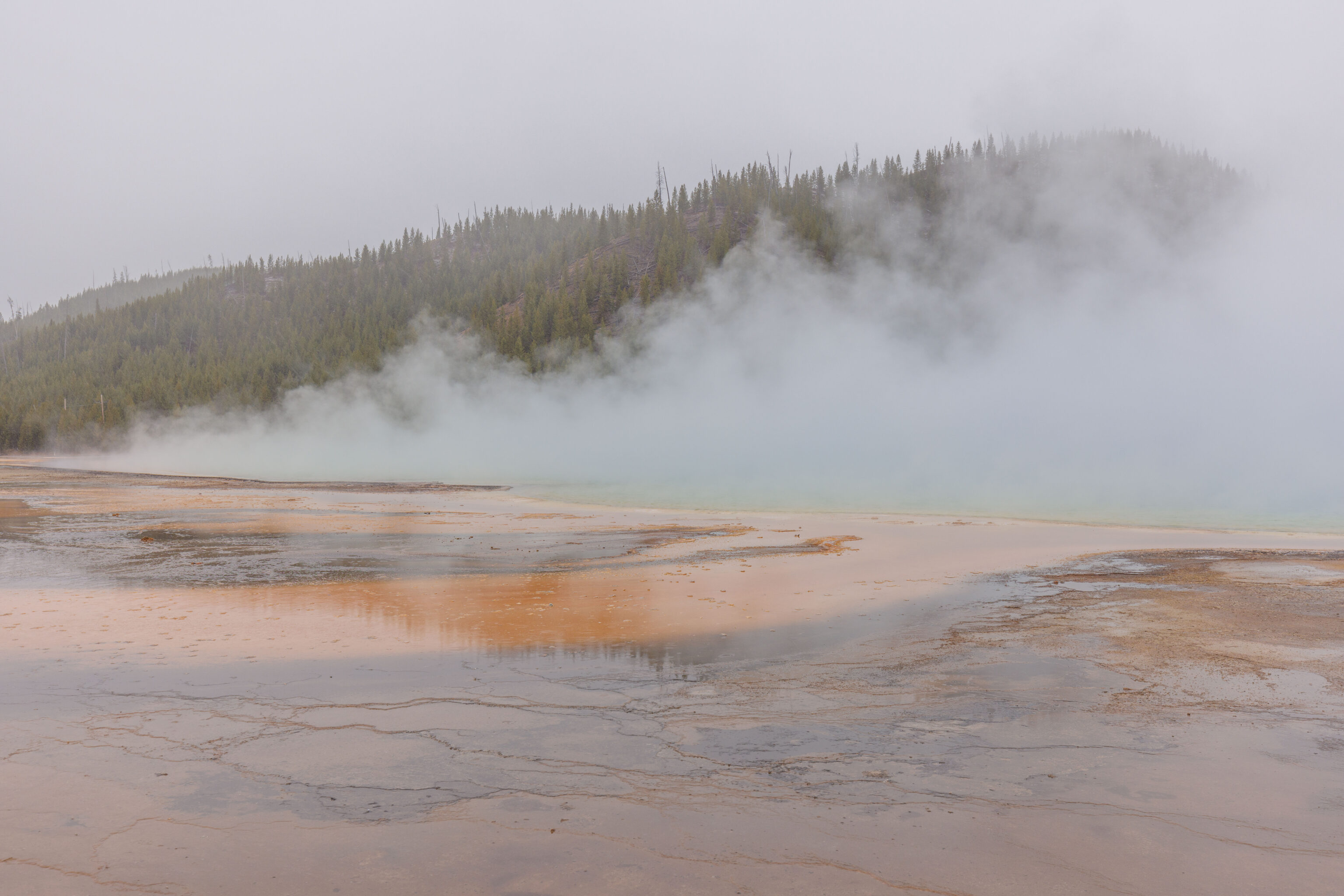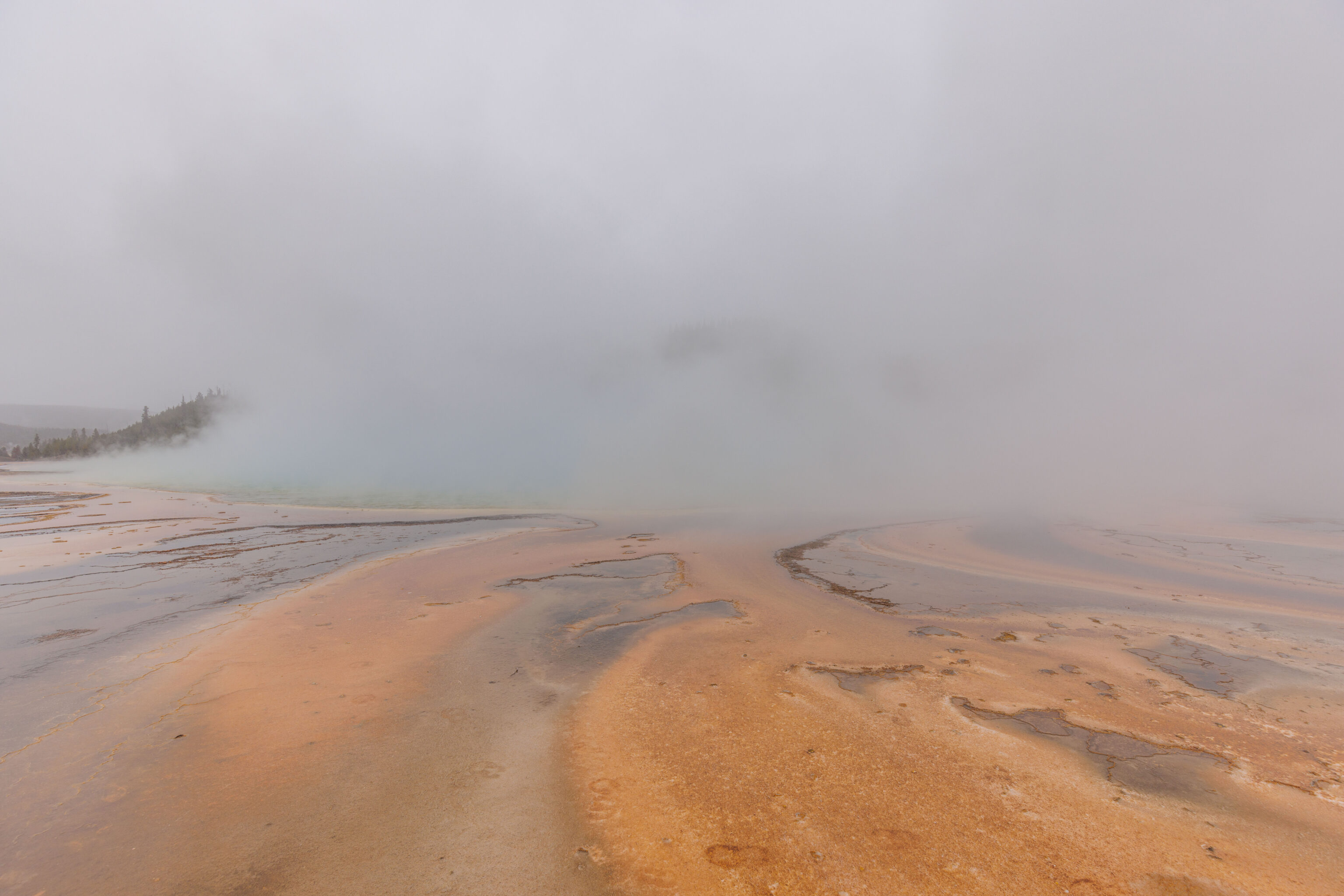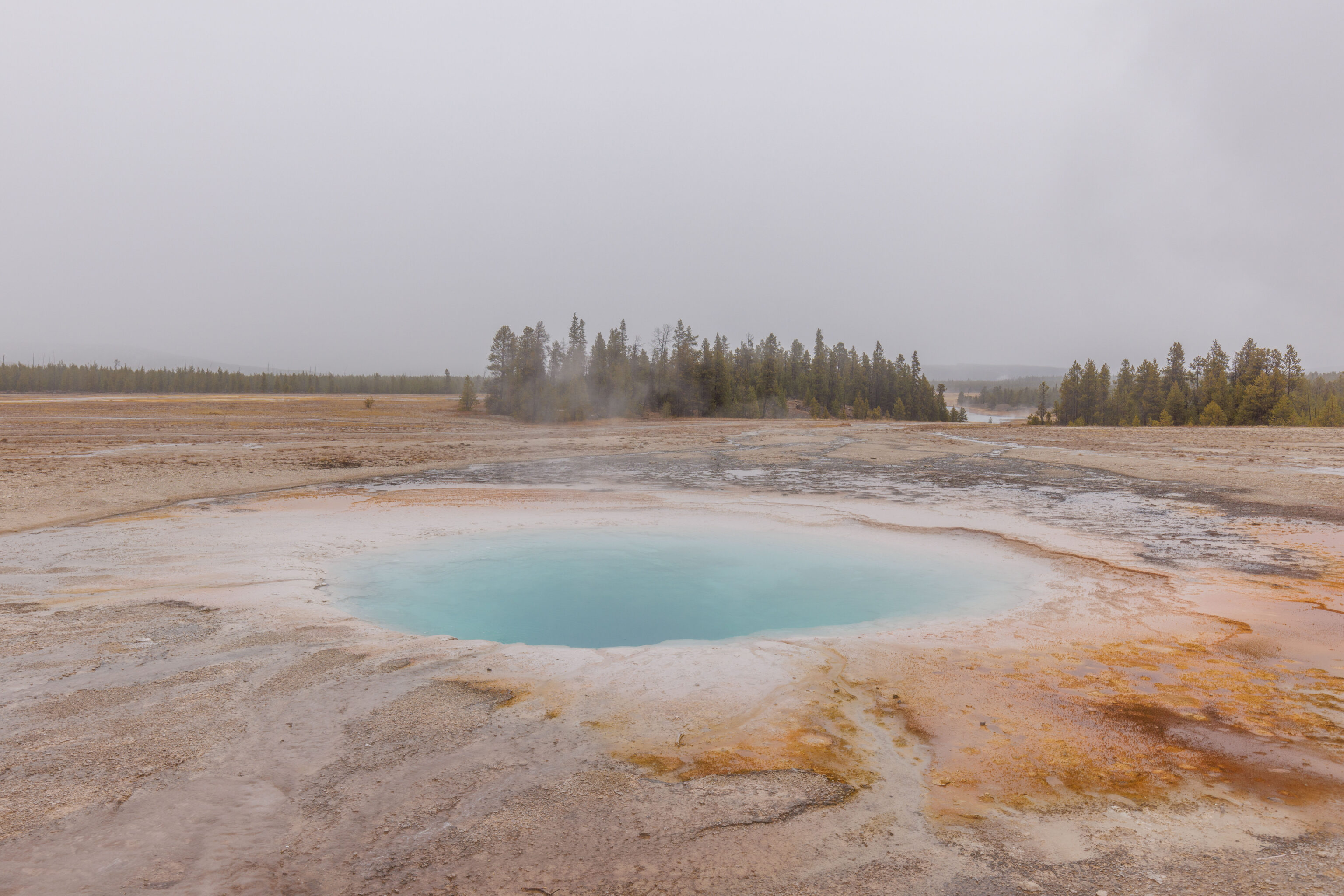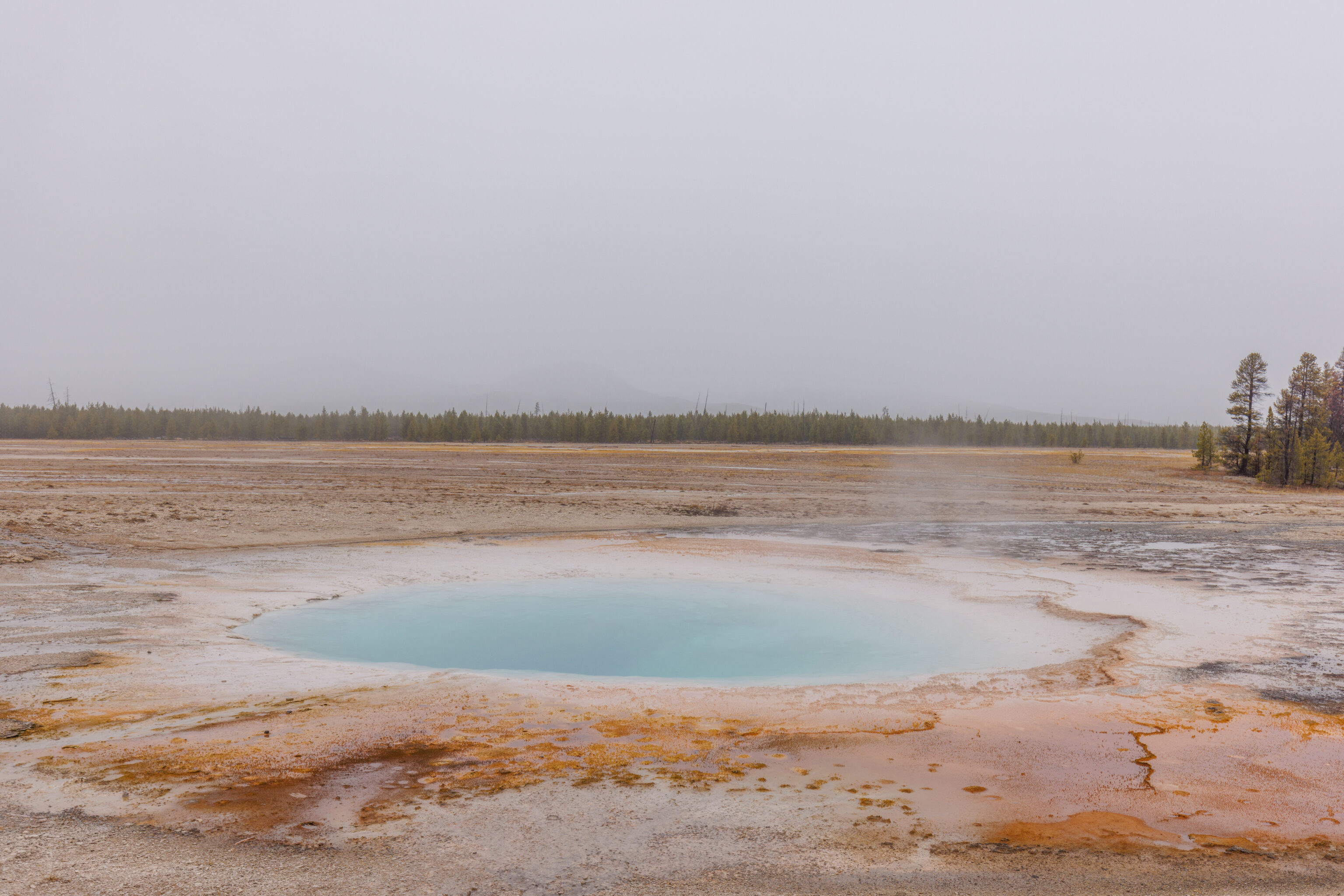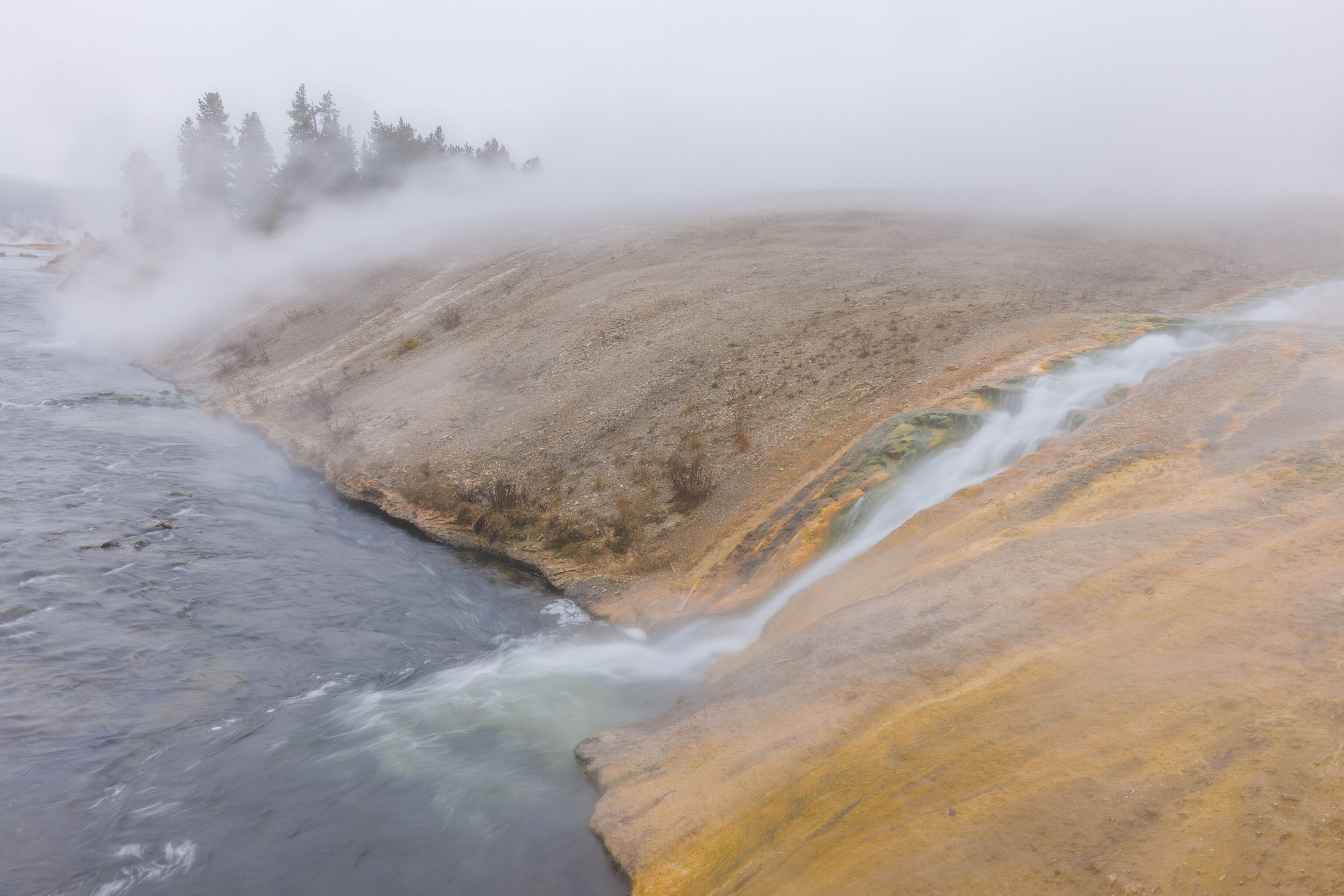After leaving the Norris Geyser Basin, we headed up north to Mammoth Hot Springs for lunch. We found out from the waiter that the park made the decision to close the roads for the season at 7pm due to an incoming winter storm. The original closure date was scheduled for midnight tomorrow so we lost a day at the park. We were able to confirm this information on the park website. We decided to continue with our current plan and visited the nearby Mammoth Hot Springs Terraces before driving back down south to see the Artists Paint Pots. Rather than visit some of the smaller sights along the way, we headed down to the Midway Geyser Basin to see the Grand Prismatic Spring, something we originally planned on doing tomorrow.
Mammoth Hot Springs Terraces
The terraces were extremely dry, the driest I’ve seen compared to previous visits.
We did find water flowing down in places but it was rather limited.
Much of the terrain was dry like in these two photos. We didn’t spend much time photographing dry terraces.
The lack of water on the surface was particularly noticeable at the very top.
We did find two small colorful thermal pools in the middle level of the terraces.
A view from the top of the terraces showing some of the red-roofed buildings of the former Fort Yellowstone in the distance. These buildings are now part of the park’s Mammoth Hot Springs developed area.
Artists Paint Pots
It started snowing as we drove south towards the Artists Paint Pots. There were some big fluffy flakes but everything melted immediately on contact as the temperature was still a few degrees above freezing. Upon arriving, we headed out on the short trail that leads to a small loop around the thermal area.
The view as we arrived on the loop around the thermal area. Snow is visible when looking closely at these photos.
An interesting little unnamed pool filled with cloudy white water. It looks like it may bubble or erupt at times, causing the white substance to be deposited on the ground.
Two more unnamed pools containing a nice milky blue color. The big snowflakes are particularly visible in the first photo. Nothing was sticking though as it was still too warm.
The Artists Paint Pots are at the very top of the hill at the edge of the thermal area. There were two areas with bubbling mud – one that was filled with water and one that was not.
The trail had a fantastic view of the thermal area down below. It was overall quite active with steam venting everywhere.
A steam vent at the top of the hill along with two different colored paths of water.
A thermal pool at the bottom of the hill.
The area around Blood Geyser at the base of the hill. The name comes from the iron oxide in the water which causes the ground to appear reddish.
A final look back at the thermal features and the hill we were walking on.
Midway Geyser Basin
The snow turned to a bit of mixed precipitation and mostly rain as we headed towards the Midway Geyser Basin. From the parking lot, it was apparent all the thermal features were covered with a heavy layer of steam. That isn’t particularly unusual here.
The first large thermal feature that is on the boardwalk trail is the Excelsior Geyser Crater. It is a huge crater covered with blue water. And tons of steam. It was difficult to see anything as we walked through the steam along the boardwalk and our glasses were covered with condensation. We did get to see a bit of the hot thermal water when we reached the far side of the crater as the wind was blowing the steam in the other direction.
The main feature at Midway Geyser Basin is the Grand Prismatic Spring. It is a beautiful blue pool surrounded by a ring of yellow, orange, and red. The massive amounts of steam being emitted today meant that we couldn’t see much of anything at all. From a distance, part of the steam had a blueish tint while the other half was orange. That was definitely interesting and unexpected. It does show up a bit in some of the photographs.
This smaller thermal pool wasn’t putting out much steam. We could see its beautiful color!
Large amounts of water from the thermal features here are constantly flowing into the Firehole River. This is common in all the thermal areas but the quantity of water here is much larger than we’ve seen in other locations.
